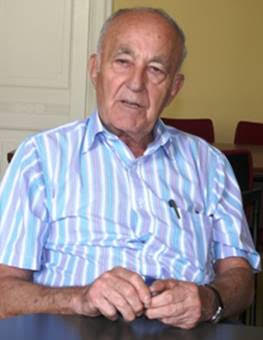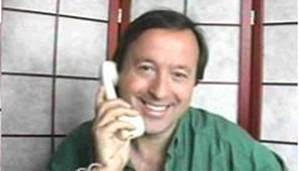
THE VOICE OF INTERNATIONAL LITHUANIA
|
VilNews has its own Google archive! Type a word in the above search box to find any article.
You can also follow us on Facebook. We have two different pages. Click to open and join.
|
Featured
Sending e-mail to Lithuania is like sending it to the black hole of the universe
- Posted by - (1) Comment
 Lithuania's business people and government officials are yet to learn the necessity of good communications. Without a two way communication there is no possibility for further contacts. One of the most frustrating experiences I had was in e-mail (before that it was in regular "snail mail") communications. I would write and write but receive no reply (with only a few exceptions).
Lithuania's business people and government officials are yet to learn the necessity of good communications. Without a two way communication there is no possibility for further contacts. One of the most frustrating experiences I had was in e-mail (before that it was in regular "snail mail") communications. I would write and write but receive no reply (with only a few exceptions).
When I was working, our management had a rule - "answer all letters received in not more than three days. If there is no answer to be given, then at least acknowledge the receipt".
One of my American colleagues, who was sincerely trying to help Lithuania, said "Sending e-mail to Lithuania is like sending it to the black hole of the universe. Everything goes one way and nothing comes back". No wander he is now disenchanted and helping others.
Vytautas Sliupas, P.E.
www.aukfoundation.org
Burlingame, California
Easier to obtain an audience with the pope, than with a minister for foreign affairs of Lithuania
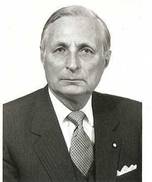 Dear Mr. Myhre,
Dear Mr. Myhre,
I enjoy your positive articles about Lithuania and send them to some 70 friends around the world. The less positive, I keep to myself.
You have lived long enough in Lithuania and must realize that many of the problems of the present day Lithuania are due to their reluctance to learn from the Western countries or accept advice from Lithuanians who lived and studied in the West. The relative success of Lithuania after World War I was largely due to the replacement of Russian educated officials by those who got their degrees in the West. My own father was the first Lithuanian with a degree in forestry from a Western university and introduced major reforms in the forest management, which survived even during the Communist occupation.
Alas, after 20 years of restoration of independence to paraphrase Kipling "The East is East, the West is West and the twain shall never (so far) meet". I spoke to a number of Lithuanians with degrees from top Western universities, who don't want to return to Lithuania - according to them, the "natives" know everything better.
I might add that for me it was easier to obtain an audience with the Pope, than with a Minister for Foreign Affairs of Lithuania.
Yours sincerely,
Ambassador Algirdas Zemaitis
Vilnius – Rome
- Bookmark :
- Digg
- del.icio.us
- Stumbleupon
- Redit it
Easter magic!
- Posted by - (1) Comment
EASTER MAGIC |
|
- - Burial ceremony of 13 January events victims in Vilnius, 1991 - -
|
What made the strongest impression on me while we walked around in the Old Town this Easter day in 1991 was the fact that the Lithuanian people again had gathered in large flocks in and outside the city's many Churches. There was far from room enough for all indoors, so the Churches had hung out loudspeakers for the congregations and audiences to follow the church services even from a distance. Grief was still noticeable, but now it was the renewed hope and faith in an independent Lithuania that first and foremost characterized the mood. It was just fantastic to see so many people gather to listen to sermons and sing hymns, but first of all unite in joint prayers for a new future for their beloved homeland.
Today, nineteen years later, the speakers are taken down from the churches' walls. There is now plenty of room inside for all who wish to attend Easter church services.
But Easter is celebrated! Over the entire country, Lithuanians follow their ancient traditions, as described below. I have personally experienced many warm and happy such celebrations with my family here. The magic of 1991 is not present in the same way anymore, but the strong traditions are still magical in their own way.
My children love to participate actively with grandfather when he decorates the Easter eggs of the year (he also keeps an amazing collection from previous years, great artist as he is), and enthusiasm is always great when we roll and break eggs before we finally sit down to enjoy the adventurous Easter meal. The good, long lasting traditions are some of the most distinguishing characteristic of this country, and Easter is perceived as the most distinctive of all holidays celebrated throughout the year.
I wish you all a Happy Easter!
Aage Myhre
Editor
LITHUANIA'S VELYKOS (EASTER) TRADITIONS

The word for Easter, Velykos, has been borrowed from Byelorussian and means "important day." The word is very accurate because Easter is the year's most solemn feast in Lithuania. Easter is not only the feast of Christ's Resurrection, but also nature's awakening from the winter's sleep.
The early Eastern morn, just before dawn, abounds with magical power. Much of this magic is concentrated in flowing water. Bathing in such water before sunrise prevents all boils, sores, rashes and other skin ailments. If it rains on Easter morning, it is necessary to stand bareheaded in the rain to ensure good growth. Small children who want to grow quickly are reminded of this.
As the sun rises on Easter morning, it "dances" swaying from side to side and changing colour: from green to blue, to red and then golden yellow. This phenomenon can be seen by rising before dawn and watching for the sun's first appearance on the horizon.
Earlier everyone went to the Resurrection services. If on the way you passed a woman, you'll have an accident. To avoid calamity it was necessary to turn around, return home and then take another road to church.
In Lithuania the Easter morning procession was usually conducted around the church. It was very solemn: church flags were held high, girls strewed flowers, the choir and all the people sang, alternating with a brass band, and the church bells pealed loudly. Three turns were made while singing the Lithuanians' favourite Easter Hymn Linksma diena mums prašvito (A Happy Day Has Dawned for Us). After the services, a blessing was made over the Easter food which was arranged in baskets decorated with greens and placed on the altar-rails.
At the conclusion of the liturgy in Church, the people hurried home. In fact, all large and small roads, every path was the scene of races: whoever arrived home first would be successful all year and would complete all work on time. Even persons walking tried to pass those ahead and reach home first. It is not surprising that accidents happened during such races. Perhaps that is why it was said that a woman met on the road brings disaster (someone had to be blamed!).

At home, Easter breakfast was eaten. The meal began when the homemaker peeled a blest Easter egg, cut it and gave a piece to every member of the family. This was done so that peace and love would always reign within the family and everyone would live in harmony. Afterward, a variety of other dishes were consumed: meat, sausages, and cakes. On Easter it was necessary to eat well and to satiety, to "recover from Lent" because of the fast all through Lent. If the area had poor families with no Easter food, their neighbours shared what they had and brought the disadvantaged families everything they need to be satisfied and happy.
Children hunted for hidden Easter eggs left for them by the Velykų Senelė (Easter Granny) or Velykė. Bunnies who painted Easter eggs were also a familiar fixture, but they were only helpers for theVelykų Senelė. Very early Easter morning they loaded Easter eggs into a beautiful little cart pulled by a tiny swift horse. The Velykų Senelė used a sunbeam as a whip. Sometimes the bunnies themselves pulled the cart laden with Easter eggs.
The Easter Granny travels around the country, stopping in every child's yard to leave eggs in baskets placed or hung for that purpose. When they awake, good children find beautifully decorated Easter eggs (and in. more recent times even sweets). Bad children only find a single plain completely white egg. If this happens, the child is disgraced. His friends and family laugh at him. Sometimes bunnies accompany the Granny and help her distribute the Easter eggs. They are kept busy not only before Easter and on Easter day, but all year round baking cookies for children. When parents leave their children behind, they promise to bring them a gift, bunny cookies. Upon their return, they tell the following tale:
"I'm walking through the woods (or orchard or past the bushes) and I see a bunny wearing an apron and hat, his sleeves rolled back, taking sweet-smelling cookies from an oven. I say to him: 'May the Lord help you!' He answers, 'Thank you, thank you. Would you like a taste? They're still hot.' Of course, I dol They smell so good, they look so good. . ."
In the meantime the-child can hardly control himself: "What kind of oven was it?" "Tiny, pretty." "Did you get to taste any cookies?" "Yes, of course." "Did you bring me any?"
At this point, the father, mother or other family member pulls out the goodies and distributes them to the children who are extremely impressed not only by the bunny cookies but also by the baking method itself. They can practically see the flushed, rushing bunny mixing the dough and stoking the oven. How wonderful that morn or dad just happened to be passing at the very time the cookies were done!
Bunny cookies are famous throughout Lithuania. It would be good to remember them outside Lithuania as well.
A variety of games were played with Easter eggs. The simplest is an egg-breaking contest. Two players face off, each holding an Easter egg and hit each other's egg. The one whose egg remains intact is the winner. The egg is held in the fist so that only its tip protrudes. The other player hits it with the tip of his egg. If the egg breaks on the side, the impact was wrong and the owner of the broken egg is not considered the loser. The winner claims the broken egg. After the game the number of eggs won was tallied. It was of paramount importance to have a hard-shelled egg that withstands breaking. In selecting a strong egg, the contestant taps an unboiled egg against his teeth. If the sound is clear and sharp the shell is hard: if dull and muffled, the egg will break quickly; it's not even worth colouring.
Some smart alecks devised an "unbreakable" egg. It was made this way: a raw egg's shell is pricked at both ends. A thin straw is inserted into one end and used to blow out the contents through the opposite end. Another straw with one end shaped as a funnel is then placed into the hole and melted pine or fir sap is poured until the egg is full. If the sap does not flow smoothly, a helper inserts a straw into the opposite hole and draws the air out of the egg. After the egg is filled with sap, the holes are carefully concealed and the egg is then tinted along with others. It weighs about the same as a real boiled egg. Sometimes the empty shell was filled with melted sugar, but it was much heavier and the sugar hardened unevenly making it more difficult to play. Of course, if caught, the cheat was punished. The direst penalty was to eat the "Easter egg."

Another amusing Easter game was egg rolling (picture above). This was best done outdoors, but also could be played in a larger room. A trough is made from pieces of wood or bark to measure about 10 cm long and 15 cm wide (it can also be much longer). One end of the ramp is propped up to produce a downward incline, but not too steep. A small circle is drawn at the bottom of the slope for the playing field into which the eggs will roll. When the game is played outdoors, the trough must be placed on a smooth surface because the eggs will not roll in the circle if there are pebbles, high grass, etc. When played indoors, the surface of the circle must not be too slippery for the eggs will roll out. A low wall or enclosure may be built around the circle. When all the preparations are completed, the players begin the contest. Four to eight persons play. Each uses an egg of a different colour to tell them apart. Eggs may also be marked in different ways. The egg is let down the incline. After one contestant finishes, the next rolls his egg aiming to reach the other's egg and tap it. If the egg hits the first one, its owner wins and takes the first egg. The eggs are rolled down the slope in turn. A contestant who wins egg rolls out of turn until his egg fails to hit another. Another player then takes his egg from the circle and rolls it.
Eggs used in the rolling contest may already be cracked (for instance, already used and won in an egg-breaking contest), but their sides should be intact because eggs with cracked sides do not roll well. The trough may be straight or curved in different ways to make the eggs roll longer. The slope may also be made of cardboard from an old box, plastic or any other material strong and rigid enough to support the weight of an egg.
A simpler egg-roll is done without a trough. A circle at least one meter in diameter is traced on a smooth surface. Barriers or enclosures are placed around the circle to keep the eggs from rolling out (crumpled newspaper may be used). A gate is kept open on one side through which the players push their eggs. The first player is chosen by lot. He rolls his egg into the circle. The second player attempts to roll his egg so that it will tap the first one. The game is played like the one using an incline, but in this case the eggs are rolled into the circle by hand with the player kneeling or sitting on the ground. Because the egg does not roll down a ramp, the entire game depends on the contestant's skill, how he rolls his egg into the circle. If the egg is rolled so hard that it leaves the playing field, the contestant loses his turn.
In the past, only young men and adolescents played egg-rolling contests. It was not proper for girls to do so. They provided their beaus with eggs, cheered the contestants on and guarded the eggs won. Today mostly children (boys and girls) roll eggs.
If guests arrive on Easter, they are given Easter eggs as gifts. The guests also bring an Easter egg for each family member (or at least the hosts and sweets for the children). Easter morning children go "egg begging" but only to the homes of acquaintances, close neighbours or godparents. When they arrive, they say hello and stand silent at the door. It is quite obvious to everyone that an Easter egg is required. The children politely say thank you, wish a Happy Easter and continue on. When Easter was celebrated for three days, no one went visiting the first day; it was unacceptable to intrude upon people on such a holy day as if someone had thrown you out of your own home.
The first day of Easter was said to be dedicated to God, people were expected to conduct themselves seriously and quietly, spend time with their family, eat well and "recover from Lent." The second day was for recreation, visiting friends and having company. The third day was devoted to relaxation. People slept late, recovered from all the merrymaking because work was waiting in the wings.
For Easter, homemakers set out Easter dishes which remained on the table all day. When guests arrived, the women could then spend time with the company and did not need to work. The table was covered with a white cloth and decorated with greens or fruit tree branches (mostly cherry) which were cut and set in water several weeks earlier so they would bloom for Easter. (Easter lilies were unknown.) Greens were also attached to the tablecloth hem which hung down from the table. The table was laden with cold Easter dishes: baked ham, goose, suckling pig, a basket or plate full of Easter eggs, sweet cheese, bread, cakes, etc. Beer (mostly homemade), liqueurs and cider were served as beverages.
Everyone who arrives to extend Easter greetings must be served. It was considered very impolite for the guest to refuse refreshment. Everything had to be at least sampled and the cook praised, else she would feel insulted.

The young who behaved with such solemnity all during Lent wanted to have fun on Easter. They assembled at a larger house to sing and dance. This usually was done in late afternoon or evening. During the day, it was popular to swing in swings and sing. If the Easter weather was warm and fair, the swings were hung from a tall tree so the young could swing higher. Given inclement weather, the swing ropes were tied from barn rafters. People swung not only for the fun of it but to ensure a good harvest next summer, just as on Shrove Tuesday. While swinging, the girls and young men sang special songs.
A group of young men assembled to practice singing Linksma diena mums prašvito (a popular Easter hymn), some other songs and make the rounds. These are the so-called lalauninkai (from lalauti — to talk loudly and much). In many other countries, such as the United States or England, carolers make the rounds before Christmas singing Christmas carols and songs. They may be compared to Lithuania's Easter lalauninkai.
These singers are usually unmarried men sometimes accompanied by a fiddler or harmonica-player. Upon arriving at a house, they first sing an Easter hymn; convey their Easter wishes and then carol. The homemaker gives them cake, sausages, Easter eggs while her husband serves liquid refreshments. The Easter eggs are handed out by the young girls of the household. Although most homes were visited, it was predominantly those with unmarried girls. They were told before Easter that the singers would arrive and tried to make beautiful Easter eggs. This was a perfect opportunity to display their talents and show off before the other village girls. It sometimes happened that the singers refused to accept an Easter egg judged to have a poor appearance and this was considered a major disgrace.
The songs these carollers sang were noted for the refrains repeated after every verse. The verses were short, usually composed of only two lines. The refrain had no connection with the song's overall content. These singers were especially well-known in Dzūkija which is famous for similar types or harmony songs.
On the hill a pear tree stood; under the pear tree lay silvery dew. . . The refrain — vynelis vyno žaliasai — refers to new wine.
It is not necessary for lalauninkai to sing the customary ditties, other songs may be selected.
On Easter, a person can learn the following summer's weather, about his personal happiness and gain protection against various pests if he knows what to do and what guesses to make.
- If he wishes to avoid seeing snakes all summer, he must avoid seeing a needle the first day of Easter.
- If an accident or calamity occurs on Easter, things will go wrong all year, the year will be unlucky.
- We've already mentioned the races home from church on Easter morning: anyone who arrives home first will be first to complete all work, everything will go well for him (especially work in the fields).
- Prayers are said to be really heard on Easter, it is therefore necessary to pray a great deal.
- If Easter morning is sunny and beautiful, the summer will be fair and the weather good; if it rains (or snows) bad weather is to be expected. The worst sign is to hear thunder on the first day of Easter but even this evil may be found to have a "silver lining." If thunder rumbles before leaves have sprouted (trees very rarely had leaves in Lithuania at Eastertime), thieves will have a difficult time plying their trade that year.
- If the sunset is very red, dangerous thunderstorms may be expected that summer.
http://lithuanian-american.org/educate/tradicijos/velykos.html
EASTER EGGS – MARGUČIAI
 |
 |
 |
Decoration of Easter eggs - margučiai - is a very ancient custom in Lithuania. At the foot of the Gediminas Hill in Vilnius archaeologists have found eggs made of bone and clay, which shows that this custom was known in Lithuania as early as the 13th Century. Easter eggs are also mentioned by Martynas Mažvydas in his dedication to his book "Hymns of St Ambrosius" (1549). Easter eggs were particularly popular at the turn of the 20th Century. They were decorated both by grown-ups and children, by rich and poor. Some were dyed in a single colour, some were decorated with patterns.
Decorations are produced by painting patterns on warm eggs with the tip of a stick or a pinhead dipped in hot wax. Droplet-shaped strokes are grouped in patterns, twigs of rue, little suns, starlets and snakes. The most frequent pattern is that of a sun, like those on large and small distaffs. Smaller patterns are joined by dots and wavy lines into larger ornaments. Their combinations are so varied that is is impossible to find two identical Easter eggs. Every village has its own best egg-decorators.
- Bookmark :
- Digg
- del.icio.us
- Stumbleupon
- Redit it
“Thou shall not speak evil of another Lithuanian”
- Posted by - (1) Comment
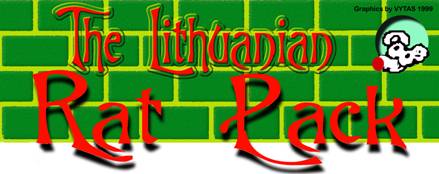
The Lithuanian Rat Pack was founded in the U.S. in July 1999 as a discussion group by Rimgaudas Petras Vidziunas Mesa, Arizona USA. Any type of discussions relating to culture, history, current events, politics, economics, genealogy, geography, books, poems, travel, visas about Lithuania are allowed. Golden rule is "thou shall not speak evil of another Lithuanian".
Lithuanian-American Club activities are announced. Growing up Lithuanian in the Americas stories are encouraged.
The Lithuanian Rat Pack started and still is on yahoogroups.com.
They also have a Facebook page:
http://www.facebook.com/pages/The-Lithuanian-Rat-Pack/293010015300
Join them and have some fun!
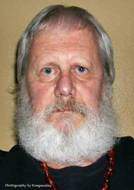
Rimgaudas P. Vidziunas
Mesa, Arizona
USA
Other Lithuanian organisations and Lithuanian genealogy websites in the U.S.
LITHUANIAN GENEALOGY

Lithuanian Global Genealogical Society
Lithuanian Global Genealogical Society (LGGS) is a non-profit society that provides this site for the use of LGGS members, fellow genealogists, and those just starting their research on Lithuania, and family genealogy. Our mission is to collect, preserve, and disseminate knowledge and information about Lithuanian genealogical and related historical, biographical, and heraldic data; to inculcate and promote interest in accurate research in these fields; to issue publications in various forms of media; and to encourage, promote, and provide genealogical education and scholarly training for all interested in these endeavors. The society is composed of a host of volunteers who take time out of their ordinary lives to further our mission.
LITHUANIAN ORGANISATIONS IN THE U.S.

Lithuanian American Community, Inc.

Lituanus (English)
Journal dedicated to Lithuanian and Baltic art, history, language, literature, and other cultural topics, published by LAC
Lithuanian Foundation, Inc. (Lithuanian)
Lithuanian Foundation, Inc. (English)
Arizona Chapter of Lithuanian-American Community, Inc.
California Lithuanian Community
Philadelphia Area Lithuanian-American Community
Los Angeles Lithuanian Community
Lithuanian-American Community of Minnesota (LACMN)
Lithuanians in Florida
Lithuanian American Community, Inc. - New York District
Save Our Lady of Vilnius
Portlando Lietuvių Amerikos Bendruomenò (Portland)
Lithuanian-American Community Inc. - San Diego Chapter
Washington Chapter of Lithuanian-American Community, Inc.
Lithuanian-American Community of Colorado
Cleveland's Lithuanian Community
- Bookmark :
- Digg
- del.icio.us
- Stumbleupon
- Redit it
Verbų sekmadienis – Palm Sunday
- Posted by - (1) Comment
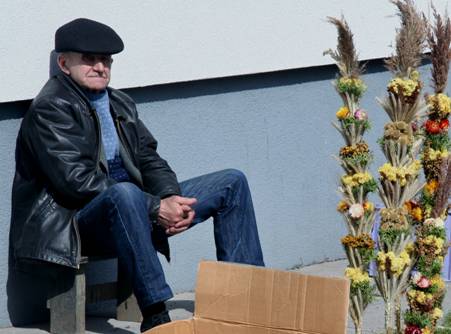
The Christian world celebrates Jesus' noble entry into Jerusalem on the last Sunday before Easter. In Lithuania this day is called Verbų Sekmadienis – Palm Sunday. When Christianity came to Lithuania, plants which sprouted earliest were honoured during spring feasts. Even now, willows, osiers and weeping willows are consecrated on Palm Sunday. Mythological folklore relates that one of the willows, called Blindė, had been a very fertile woman, bearing numerous children. Earth, the most fertile mother was jealous of her. When Blindė walked through a wetfield, her feet sank into the mud. Blindė turned into a willow tree out of great sadness.
The osier, with male spores was regarded as an unusual tree. Folklore tells that the osier grew out of a secretly murdered man. A fife made of osier wood, speaks in a man's voice. Evil spirits avoid it because of its red color.
Palms of Vilnius (Verbos)
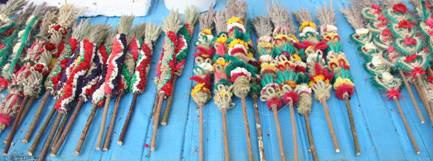
These decorative, dried plant bouquets had no ritual purpose earlier. However now with the addition of juniper and osier branches they have become Palm Sunday tokens. The Vilnius' palm is today produced in fifteen villages in the Vilnius region.
Painters were among the first to show interest in palms. In 1847 K.Ruseckas painted a young girl with a bunch of palms in her hands and in 1913 he presented palms in colorful folk art and trade show posters. The origin of Palms of Vilnius has not been determined. It is thought that they could have been ancient Vilnius trade guilds' processional adornments, manufactured mimicking Jesus' entry into Jerusalem. Vilnius' Palms are created using dried wild plants, forest and garden blossoms and other plant parts. About thirty different plants are used, among them are mosses, berry greens, timothy grass, St. John's worth, tansy, yarrow and many others.
The making of palms begins the day after Shrove Tuesday and continues till Palm Sunday. This is a project that involves the entire family, however most often it is women's work. The most popular palms are roller shaped. Now there are wreath and whip shaped, flat and puffed out.
 |
PALM SUNDAY PALMS [ a.k.a. VERBOS ]
The Christian world celebrates Jesus' noble entry into Jerusalem on the last Sunday befor Easter. In Lithuania this day is called Verbø Sekmadienis – Palm Sunday. When Christianity came to Lithuania, plants which sprouted earliest were honored during spring feasts. Even now, willows, osiers and weeping willows are consecrated on Palm Sunday. Mythological folklore relates that one of the willows, called Blindë, had been a very fertile woman, bearing numerous children. Earth, the most fertile mother was jealous of her. When Blindë walked through a wetfield, her feet sank into the mud. Blindë turned into a willow tree out of great sadness. PALMS of VILNIUS [ a.k.a. VILNIAUS VERBOS ] |
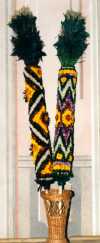 Verbos made by Leokadija Šalkovska. Photo by Gediminas Svitojus |
- Bookmark :
- Digg
- del.icio.us
- Stumbleupon
- Redit it
Wollongong reflections
- Posted by - (8) Comment
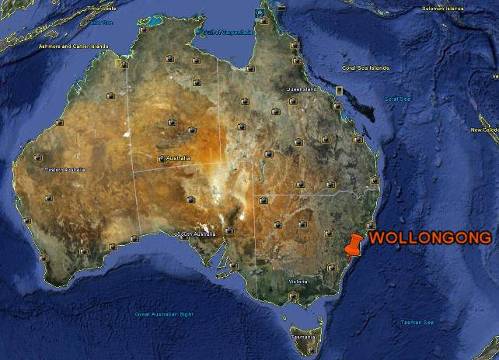
Gintautas Kaminskas lives in Wollongong, Australia. Throughout his life, since his teenage years, his dream and hope was to settle in an independent Lithuania, the country his parents fled during the Second World War. He kept the dream of his ancestors' country alive through many post-war years and in 2008 his dream finally came through; Gintautas moved to Lithuania. Towards the end of 2009 he returned to Australia, disillusioned and sad to have experienced a country totally different from what he had imagined and hoped for. I asked him to explain why.
Here is his story:
I usually don’t like to talk about my family’s story, because most people don’t understand. But I can tell from what you write that you are an idealist and you are trying to understand Lithuania and Lithuanians so I will tell you my story, briefly.
I will start by mentioning that I have a friend in Iceland and I tell him (probably ad nauseam!) that he should be ever so grateful that he was born in his own normal (unoccupied) homeland and therefore automatically grew up speaking his native language in his home, at school at work, and automatically married a woman of his own nationality and therefore naturally spoke his native language at home with his wife and children and now grandchildren. I had none of those privileges.
My parents were married in Kaunas in 1943. If Lithuania had been a Scandinavian country, I would have grown up in Kaunas, happily, and would probably still be there today with my Lithuanian wife and children and grandchildren, just like my friend Jóhann in Reykjavík. But no, not for me. Having experienced one Russian occupation already (1940-1) and having narrowly escaped deportation to Siberia the first time (some of our extended family members weren’t so lucky), my parents decided to flee to Germany in June 1944, just as the Russians were trying to re-occupy Lithuania. My mum was pregnant with my sister, who has born in Germany in November 1944. I was born there (München) on 15 February 1948 (one day short of Vasario 16-toji, unfortunately).
When I think back, I wish my parents had been able to stay in Germany; at least I would have grown up European, close to the languages and countries that are my passion. But no such luck. All the displaced persons had to go elsewhere. Almost all wanted to go to USA, but that was not possible. You had to go where you were sent. We were sent to Canada. Things were OK in Canada I guess, apart from the climate. (We were in place a lot colder than Toronto, where most of the Lithuanians were.) In 1959, when I was 11, my father decided we would move to New Zealand for a better climate ... and better fishing! Ironically, it was this move that made me appreciate my Lithuanian identity and to cling to it like never before. I was teased by the NZ kids for speaking English with a Canadian accent. I hated that. I started telling myself that as soon as I was old enough I would go back to Canada. But after a few years (we were in NZ five years) I started to realise that I was cherishing a silly hope, because I wasn’t really Canadian anyway. So I became very Europe-focused, studying my native language, insisting that my parents speak it with me, and also studying Spanish all on my own from a little textbook. Since Lithuania was blocked to me, my dream became to live in Spain for a while. (Which I did do eventually and enjoyed it immensely.)
Eventually (1964) my sister met an Australian and followed him to Australia, so my parents decided to join them. We settled in Adelaide and it was there that I finished high school and did my B.A. Hons. degree (majoring in Spanish and French). I was a lot happier in Australia because there were more Lithuanians there and I participated heavily in Lithuanian cultural and even sporting activities (basketball). I got a scholarship to do an M.A. in Melbourne (in Spanish/Linguistics) so I left home in February 1970 (the day after I turned 22) and went to Melbourne. It was there that I got married to my first wife, an Australian, at age 22. We were married for 32 years. We lived in Canberra (I was a Public Servant) and we brought up three sons. The highlight of my career was 1979-82 when I was posted to Australian Embassies in Europe, first Rome (I also speak Italian), then Madrid. I wanted to go on more postings but my wife didn’t. As I approached early retirement age (55) I realised that I was never going to feel fulfilled unless I went to live in Europe again, so sadly, I got divorced and left Australia.
My plan had been to take early retirement in 2003 and go straight to Lithuania. As it happens, I took a detour to Montréal, Québec, first. After five years in Québec, I left and went to Lithuania in February 2008 to join my dad who had returned to Lithuania in 2007. I did not live with him because he moved in with a lady friend, but I saw him a lot, and toward the end I was helping the lady nurse him full time. (He died in August 2009.) At first it was wonderful being in Lithuania and speaking my beloved native language all the time, with everyone. But then I started to notice how unhappy so many people are, and how much dishonesty there is among crooked businessmen and tradesman and landlords who don’t pay taxes, bribe-taking public servants, policemen and doctors, people falsely claiming invalid pensions, etc. At a higher level some major scandals have shown that even some judges and Cabinet Ministers are not beyond taking a bribe. The Seimas members are notorious for their greed and many have been exposed as corrupt.
It is mainly my experience with the Lithuanian health system, doctors and hospitals that has caused my greatest disillusionment with Lithuania and has in fact made me too frightened to live there myself. We could not leave my dad alone in hospital. We had to be with him 24 hours a day. We had to bring him food (you would die of malnutrition if you depended entirely on the inadequate meals the hospital gives you), we had to be there to bribe the doctor every few days (the amount of attention they paid to my dad dropped off noticeably if a new bribe was not received every few days), we had to be there to help him go to the toilet and in the end phase to change his nappy, we had to be there to make sure he got his medicine. The hospitals were disgusting. One single toilet on the whole floor for 50 patients! No toilet seat! No paper! No soap! No fly screens on the windows – in a hospital! No lock on the toilet door – men come in and smoke while you are using the toilet – despite the “No Smoking” signs! No facilities for the patients to have a shower or somehow wash themselves. Cold in winter and hot in summer. Hygiene very dubious. An absolute nightmare and disgrace. When my dad died we even had to bribe the cemetery officials to get a decent burial site that wasn’t down in the gully where a big puddle forms and the ground goes boggy every spring. (They deliberately offer you the lousy places to make sure they get a bribe.)
So by the end of 2009 I had left Lithuania too, with aching heart. I blame the bribery and corruption entirely on the Russians. If Lithuania had been left alone (preferably right from 1795, not just 1918!) I am sure it would be like Sweden now. There are a lot of hard-working decent folks in Lithuania and my heart bleeds for them. The only way out of this quagmire that I can see is for journalists and other brave people to campaign against bribery and corruption and to convince the general public to start doing so too. There are a lot of political decisions that need to be made. It is crazy that Lithuania does not have a car tax (automobile registration fees). The Government could raise millions annually like that – every civilised country has it. Same goes for local government taxes (called ‘rates’ in most English-speaking countries). It’s absolutely crazy not having that. You cannot have Scandinavian-style welfare with a Soviet-style taxation system.
I am still an idealist, but now, belatedly, also a realist. I understand that I will be unlikely to see much of an improvement in my lifetime, and therefore I will not be able to end my days in Lithuania, as I had hoped. But the flame of hope burns brightly in my heart that the past sacrifices of brave Lithuanians for the homeland have not been in vain and that one day there will be a living standard in Lithuania not far behind that of the Scandinavian and leading Western European countries. I hope I can make some contribution to the process, no matter how minor. I value your work as a journalist, keep it up! That’s why I have taken the time today to tell you a little about one Lithuanian’s life as an exile.
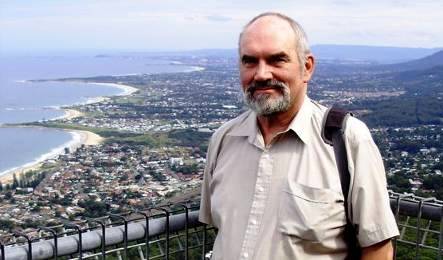
Gintautas Kaminskas
Wollongong, Australia
LITHUANIAN DOCTORS HAVE NO OTHER CHOICES THAN TO STEAL OR ACCEPT BRIBES
Dear Mr Kaminskas,
I was touched by your thought provoking letter to my friend Aage and it made me cry how agonising your experiences were in your ancestral country. This is the Country that people like Aage and myself and many more like us have adopted as we too had dreams of living in a country which held many promises and hopes and our frustrations are not different than yours.
I however take the Liberty to touch upon some of the points raised by you and believe me your observations are 100% true. Let me talk about the Doctors and the Health care System. My own wife, a Lithuanian (born 11 years after you) became a Doctor because her father and many more in the family were Doctors and the Profession was called noble. She did Post graduation in Psychiatry and followed it up with a post graduation degree in Obstetrics and Gynaecology. So with internship etc, it took her nearly 15 years to complete her education. But there were not enough jobs, so she had to bribe heavily and get a job where her princely salary in this Independent country was 450 US$(when US$ was 4 Litas ). Please tell me where can you hire Doctors for such salaries other than the third world countries with lowest per capita income. And this was the story of thousands others. To subsist, to bring up children, to give them good education, they had to either steal or accept bribes and the second choice was the easiest. It however had its own pitfalls, in order to take bribes and still not get caught, they had to bribe those in position of power so as to have kind of Godfathers and those Godfathers in order to remain in that chair for endless years had to find their own Godfathers. And so on. And the story is similar for the Teachers, for very many other Civil Servants and Professionals.
One fine day, my dear wife comes to me and says that she has volunteered to go and work in Afghanistan with the Lithuanian Mission. Shocked and surprised I asked her "Is it For More Money".-she laughed and said that if Lithuania cannot pay her a decent salary here-how would they pay it there-Logical I thought. So I asked where then was the motivation to work in an environment where she could even die. Her answer was unbelievable "I was trained to be a Doctor to serve the Humanity and that is why I want to go there to serve the humanity with dignity as here one when takes bribes, one not only falls in one’s own eyes but most of all in the eyes of the patient and that is the most humiliating experience to go though day in and day out. As for the death-if that is destined -let it be at least I will die for a cause and my country will mourn me as a Hero and not as a thief". It is another story that she could not go as the Budget Cuts came soon thereafter.
5 months back she left for the UAE on a 3 years contract to work as a Specialist in a chain of Hospitals and gets monthly salary equal to 18 months salary in Lithuania. She gets the respect of the people of that Country and of the patients, she holds her head high and she has sound sleep every night. This has meant a lot of sacrifice on her part, to leave her children, and husband behind, to leave the roots of her country, to leave her friends and relations and on the other hand cope up with different work ethics, new language, different culture but she is not the only one. Professionals are fleeing ever so often-question is only of time-some sooner-some later.
If the Legal System here was World Class I could knock the Doors of the Courts to demand justice that My Conjugal Rights have been denied to me by her country which cannot pay its Doctors and many professionals appropriately and yet there are hundreds of Billionaires and Millionaires here within a short span of 20 years of independence.
So Mr Kaminskas, it is not one Aage or One Mr Kaminskas or ten or 100 or 1000 like them who can change the destiny of this Nation-it is the Newer generations who can do but will they! I doubt, I remember my own stepchildren asking their mother after every duty; "How much did you earn today"
Warm Regards to you Mr Kaminskas.
Raj Chaudhary
Owner Director Sues Indian Raja Restaurant, Vilnius
LITHUANIA NEEDS A NEW ‘REVOLUTION’ NOW
Dear Mr Chaudhary
Thank you for your sincere and very interesting feedback. If you have not already done so, I would urge you to give Aage permission to publish your comments. The 'revolution' to achieve Lithuania's independence in 1990-1 needed leadership from the top, but Lithuania needs a new 'revolution' now. This one has to start at the 'bottom', among the people. Lithuanians have to start admitting what is wrong with the country and not just shrugging it off any more: they have to start demanding change. As I have already told Aage, I firmly believe the path to change and reform is first popular demand, followed by the initiative being taken up by journalists and other professionals, including that rare beast "politicus honestus" – if they are not totally extinct in Lithuania.
Best wishes, ypatingai „geros sveikatos“ !
Gintautas Kaminskas
Wollongong, Australia
LET US PRAY THAT THIS COUNTRY WILL TURN AROUND
Dear Mr Kaminskas,
Thank you for a very prompt response and some very caring words.
All I can say is that Hope is a Big asset for the mankind and It is gratifying that in most hearts there is a trace of it-So I too hope for the Better for my adopted Country. Let Me Submit that India at one point of time was described by a World Famous Economist "India is a Rich Country-inhabitated by the Poor."-a saying which is sadly applicable to the Modern Lithuania now (rather than India which has made progress by leaps and bounds) with a young democracy and that reflects sadly on the Powers that be for it to happen. Let us pray that this Country will turn around to be one of the greatest even though small in size but they say Size Never matters.
Kind Regards and I remain,
Yours Truly,
Raj
IF THE BLACK ECONOMY WORKS, THEN THERE IS NO REASON TO FIGHT IT
Hi,
Thanks for the rest of the story of Gintautas. I had written him a letter I suppose while his father was in hospital offering to meet if he was in Vilnius, but he said Kaunas had everything he wanted. Since I am rarely in Kaunas, we never did meet. But my experience in VIlnius has been day to his night. Last May I was a couple of days away from death from a gangrenous gall bladder. The care was fantastic. I paid no bribes and it cost me about 750 in all (self employed so I paid 600 for compulsory state health insurance and we had to buy medicines. I would probably be dead if I had been in the States as I would not have seen a doctor as soon and would have been hours instead of days from death when I would have sought help, which I could not afford. 7500 dollars would not have covered the bill. 20-30 thousand dollars would have been closer to the mark.
To live in this country, you have to network. Almost everything is word off mouth.
Yes, there is a lot of black economy, but if it works, then there is no reason to fight it. For example, police were allowed to collect brines for speeding. Everyone thought that was terrible, except me. The purpose of speeding tickets is to keep those idiots from ramming my car and killing me, and to keep me from doing the same to others. So they got rid of bribes and now there are very few tickets and lots of violations. I don't know how the motorcyclist survived. No one was moving and the light was red for him, so he gunned the engine. The bike ended up under a SUV and he flipped over it. Soon after theyy changed the light system so that yellow is not concurrent and there is a pause between them.
When I came here, lending was tight and building was sparse. Then the banks started lending to everyone, Western style, prices skyrocketed, and now we have a bad economic crisis. Even so had the industry switched in the last few years from building new units to renovating old ones, then they would still be employed because they would be receiving EU funds now instead of holding worthless mortgages. That was caused by Lithuanians not understanding Western practices. It is going to take a while until people here understand the Western world enough to protect themselves.
Iki,
Arturas Bakanauskas
Vilnius
PS: Kaunas is something of a tragedy
Kaunas is also something of a tragedy. For many years, the local government was inept at best, corrupt at worst. So no infrastructure improvements were made and businesses avoided Kaunas like the plague. You can see that in real estate prices. It is more expensive to buy in Klaipeda than in Kaunas. Only in the last few years have they finally started to change things. That is why I surprised by Gintautas's answer that Kaunas had everything. For example, they have never sanded the sidewalks in Kaunas since I have lived here, except perhaps on hills. Laisve al. was an ice slick when I visited in winter. That is one sure way to limit business - keep people at home.
Arturas
LITHUANIA IS FAR MORE INTERESTING AND FULFILLING THAN FINLAND AND USA
Dear Aage, dear Mr. Kaminskas,
I need to reply to the March 27 VilNews, as the very same reasons, which are driving Gintautas Kaminskas away from Lithuania, are keeping me drawn to Lithuania! I was born and raised in Finland, one of those wealthy Scandinavian countries Mr. Kaminskas keeps comparing to Lithuania. I am currently living in the US, in another well organized, wealthy society. However, my life in Lithuania is far more interesting and fullfilling than my lives in Finland and the US. That is because in Lithuania I have a chance to make things better.
Yes, hospitals in Lithuania can be scary places! So for five years now I have been part of International Charity Christmas Bazaar, a charity event, which for example in 2007 collected 100.000 lt for Vilnius University Children‘s hospital. I am part of the change for the better! When my children started schools, I realized that it might take some years for the government to improve the quality of education in Lithuania. So I started a school with my friends! Vilnius International School is now an example and inspiration for many government schools and teachers working in them. My favorite hobby, horse riding, is also still suffering from post-Soviet recession. I joined a private initiative riding association and started organizing competitions, fundraising events and seminars to raise the standards and make opportunities for young riders to dream about big competitions – who knows, maybe Olympics some day! Yes, any of these things I could do in Finland and in the US, but for sure the effect of my actions would not be so dramatic and concrete than in Lithuania. Sometimes the change is not about money. Sometimes I just need to smile and compliment an overworked, stressed government emloyee to get better service.
The quality of life in Lithuania is not about perfect order and wellfare. It‘s about relationships between people and being in control of your own situation, just the way life should be! When a traffice police stops me in Finland, they write me a ticket, wish me a good day and let me go. Everything is very well organized and polite. When a traffic police stops me in Lithuania, they first yell at me for whatever bad thing I was doing. Then they ask ask me where I am from. Then they want to know something about Finland. I might end up spending a good half an hour by the roadside chatting with the policeman. He learns about my life, I learn about his life. So who wants Lithuania to become an organized Scandinavian country? Not me!
No doubt a lot of corruption and robbery takes place in every day life in Lithuania. Well, I have read my 13th century Livonian Chronicles. Lithuanians appear in the pages of the chonicles as mysterious troops from the woods, riding their fast, little horses, spreading fear, stealing everything, killing everyone and again dissapearing into the deep woods. This is something unique! The way Lithuanians still know hundred and one ways to bend the rules has nothing to do with the Soviet era, in my opinion. It is almost 1000 years old tradition of mischievious entrepreneurship spirit!
So please stay in a country where people still matter!
Best regards,
Liisa Leitzinger
Florida, USA
- Bookmark :
- Digg
- del.icio.us
- Stumbleupon
- Redit it
- Posted by - (2) Comment
Lithuania’s Good/Evil

The deepest foundation on which morality is built is the phenomenon of empathy,
the understanding that what hurts me would feel the same way to you.
Time Magazine, March 2007
Lithuanians are probably among the world’s most contrast-embossed peoples.
On the one hand, this nation brought forth very prominent humanists, thinkers and skilled professionals in many fields; scientists, politicians, businessmen, church leaders and leaders within culture, science and many other areas.
On the other hand, Lithuania is overrepresented among Europe's criminal gangs, and also internally in this country there are many individuals and groups that have given Lithuania an international disgrace spot that will be difficult to wash away, at least in the short term.
I spoke a few days ago with a friend from my home county far up in northern Norway. He told me that five years ago he had become aware of a Lithuanian who had moved to the town where my friend lives. This Lithuanian, my friend told, got a job in a carpentry workshop which had never distinguished themselves with particularly high quality of the products they delivered. But in less than a year all became very different, when the Lithuanian proved to be a very capable carpenter. Not only were the products now supplied of much higher quality and all delivered according to agreed time and price, but also the company itself seemed to undergo a change for the better, all because of a skilled Lithuania that so clearly showed what real quality and work ethics mean for a company.
In the same area in Northern Norway a leading police chief in an interview with a local newspaper asked people to report to the police if they saw cars with Lithuanian number plates, and in another Norwegian district, people have already through several years made it a rule that they alert the police as soon as they see a car with Lithuanian registration plates.
Norwegian and other European prisons are packed full of Lithuanian criminals, and many have asked themselves whether the price of the Schengen Agreement for open borders in Europe is already becoming too high. It is also constantly asked why Lithuania itself does not do much more to crack down on criminal bands in the towns and districts where they originate.
Increased punishment and restriction of freedom does of course not solve a serious problem like this, and I am of the opinion that the authorities, communities and neighbourhoods must be far more actively working in teaching and integrating children and youth from families with potential problems. The many fine people who value honesty and justice high should no longer sit still, but take immediate action to help Lithuania's future generations follow in the footsteps of the good.
My guide was Monsignor Kazimieras
One of the first things I experienced when I came to Lithuania 21 years ago, was a private tour of the cellars under the Vilnius Cathedral. My guide was Monsignor Kazimieras Vasiliauskas, who in a truly remarkable manner managed to make alive Lithuania’s proud history while we walked among the graves of the country’s former dukes and others who so greatly helped to make Lithuania a world leading country for hundreds of years. The Monsignor told me about his years in, respectively, German and Russian captivity, and I left the Cathedral with a deep sense of respect and admiration for this great country and a cleric who had been forced to so much suffering because he always kept his faith and humanity high. I felt I had been very close to this nation's historical and contemporary pride and goodness for a few minutes, represented by the graves of the country's prominent leaders through the centuries and a man who so clearly had preserved his faith in good, even throughout many years of imposed suffering.
I have never personally met Henrikas Daktaras, the man often referred to as Lithuania’s leading criminal authority, but I have through many years seen the results of his and his like-minders’ destructive activities both here in Lithuania and also far beyond Lithuania’s borders. The admiration and respect I got for Lithuania after the tour with Monsignor Vasiliauskas felt almost like a distant dream as I in the early 1990s started discovering what was going on in this country; with regards to corruption in the corridors of power, of public 'theft' from its own people, as well as acts committed by criminals and half criminals with greed and lack of respect for their fellow man as their leading motives.
Wikipedia states that evil are the acts that are regarded as morally bad, intrinsically corrupt, wantonly destructive, inhumane, selfish, or wicked.
As per another definition, evil is that which is the reverse of good, whatever is censurable, mischievous, or undesirable, morally depraved, bad, wicked, vicious; doing or tending to do harm, hurtful, mischievous, prejudicial, depraved intention or purpose, desire for another's harm, causing discomfort, pain, or trouble, unpleasant, offensive, disagreeable, troublesome, painful.
Lithuania's good people should not let the destructive and selfish powers rule or continue to influence fine people’s lives here and abroad. Those who want the best for this nation should as soon as possible start discussing what could be done to take control over and neutralise the nation's destructive forces, no matter where and at what level these now reside.
Lithuania deserves to again be counted among the world's great nations, but it is up to the Lithuanians themselves to fight the evil and the negative forces that still have far too free scope to continue their misdeeds. As long as these forces find fertile ground in the Lithuanian society, this country will remain on a stage of development that should have been left behind long ago.
Aage Myhre,
Editor
| Monsignor Kazimieras Vasiliauskas (1922 – 2001) 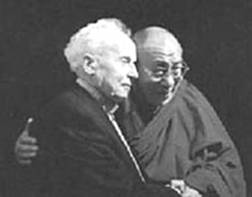 Catholic priest, monsignor. Spent years as a prisoner in Germany and later in Stalin's concentration camps and at the coal mines of Komi, Siberia. The Soviet authorities only permitted him to return to Lithuania in 1969. |
Mafialord Henrikas Daktaras (1957 - ) 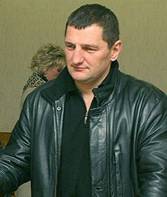 Dr. Henry (alias – Henytė) – one of the most famous criminals of all times in this country. Local media often refer to him as Lithuania’s main criminal authority. |
- Bookmark :
- Digg
- del.icio.us
- Stumbleupon
- Redit it
Lithuania’s identity?
- Posted by - (2) Comment

What happened to Lithuania's identity? This country that for hundreds of years was characterized by tolerance, openness and multiculturalism? This country that 20 years ago arose from decades of Soviet occupation and oppression in a very dignified, admirable way that resonated throughout the world? What happened to the ideals of the Middle Ages, the years between the world wars and the popular movement that triggered the nation’s new declaration of independence in 1990?
Lithuania’s Ministry of Foreign Affairs may have found a way to restore the country’s identity by pioneering a new type of symbol to convey the character of this nation in a ‘fragrant way’ – with a bottle of perfume. The ministry has already sent bottles of the new fragrance to Lithuania’s embassies around the globe. The project with olfactory appeal is "a good example of how to communicate Lithuania to the public in an innovative way", according to a foreign ministry statement. "We wanted to create something special, representing Lithuania and the Lithuanian character," Mindaugas Stongvilas, an expert in emotional communication behind the project told the newspaper Vilniaus diena earlier this year.
In Scandinavia and the British Isles, it is probably the word crime, which will be first mentioned if one is asked to say something about Lithuania’s identity of today, though most people know very little about Lithuania whatsoever.
The few times Lithuania is 'honoured' with headlines in Western media, it involves, unfortunately, all too often stories about crime or about the nation's homophobia and the neo-Nazis’ parades and newfound popularity in a country that above all others should have learned from the sad and serious mistakes to its own Jewish population during the years of Holocaust.
Identity is much more than new slogans, logos, or perfume-stunts – although they also are of important elements in creating a new country profile.
My suggestion is that this nation looks back to the times when tolerance, dignity and widely recognized respect for other nations, religions and cultures was this country's hallmark and identity.
Because that’s what this fine country deserves...
- Bookmark :
- Digg
- del.icio.us
- Stumbleupon
- Redit it
- Posted by - (2) Comment
Russia’s nuclear projects:
A deadly threat to energy independence
of the Baltic States
Text: Dr. Stan Backaitis
P.E., SAE Fellow, USCBSC Consortium, member of CEEC

Ignalina Nuclear Power Plant on the shore of Druksiu lake
Russia can turn the lights out on Lithuania and the other two Baltic states any time it pleases. And they can't turn them back on without Russia’s permission.
Not only does this small, central European nation, as well as its neighbors Latvia and Estonia, not have access to the Russian owned-switch, but, to a large extent, it also depends on energy supplies from Russia to power its electricity generating plants; power that is needed for energy and economic independence. Lithuania as well as the other Baltic countries, being poor in energy resources, are facing a tough future and are seeking solutions.
What would you do?
Background
Lithuania’s Ignalina Nuclear Power Plant (INPP), a Soviet Union built installation with two RBMK-1500 reactors, was finally shut down on December 31, 2009. Closing down INPP was one of the conditions of Lithuania’s accession to membership in the European Union (EU). Overnight, the shut down changed Lithuania from a country exporting large amounts of electricity to a huge electricity importer, mainly from Russia, which is seen as an unreliable, and driven by political motives, supplier. Unfortunately, most of the remaining Lithuania’s power plants, that produce electricity, are fired by natural gas. Russia is its only accessible supplier.
To escape from dependency on Russia’s energy resources, Lithuania’s government, upon shut-down of the first INPP reactor in 2004, (Fig. 1) has made occasional statements of building a new nuclear power plant (NPP) in partnership with Latvia and Estonia. However, beyond rhetoric, nothing concrete was accomplished for the following four years. Only in June 2009, Andrius Kubilius, upon forming a new Lithuanian government, indicated that a new NPP, serving all three Baltic countries - Latvia, Lithuania, and Estonia, as well as Poland , would be built and put into operation in the 2018-20 timeframe.
In December 2009, the newly formed Lithuania’s Energy ministry (ENMIN) announced a tender offer for the development, design, construction, and management of a new NPP at Visaginas (VNPP). Review of some 20 responses indicated that only five of the proposals were worthy of further consideration. In September 2010, the ENMIN asked the five respondents to propose committing bids. Of the two responding parties in November 2010, only South Korea’s “Korea Electric Power Corporation” (KEPCO) was found to be in full compliance with the terms of the tender offer. However, two weeks later on December 10, 2010, KEPCO announced withdrawing its proposed bid.
The news media in Lithuania and the other Baltic countries are busy speculating about reasons for failing to home-in on an investor for the new NPP. The stories range from Russia’s pressure on all bidders to withdraw from the bidding process and its announcements to build two separate NPPs on the eastern and southwestern borders of Lithuania to KEPCO’s withdrawal because of possible armed conflict between North and South Koreas.
This mini study recognizes several factors that appear to have been predominant causes for the failure of the tender offer. They are: political, economic, financial, and indecisions partly due to Russia’s controlling influence on the existing electricity system and partly due to insufficient appreciation by Lithuania’s politicians and energy planners of how large international corporations and financial institutions operate as well as interact with their respective countries’ governments in such large financial commitments.
Political factors
Although Lithuania and the other two Baltic states have attained political independence, they still belong by virtue of electricity and gas imports to Russia's sphere of influence (Fig. 2.). Apparently, Russia has no intention to strong-arm the Baltic states over energy issues, since the sale of energy to them provides Russia substantially better margin of profits than sales, for example, to western Europe. Being the sole supplier of energy resources, Russia has a tremendous amount of leverage over the three countries in terms of their price and delivery. To break away from this dependence, Lithuania and its partners Latvia and Estonia announced their intention in 2004 to build a new nuclear plant that would provide them the needed electric power and thus free them of imports from Russia. However, for nearly four years, while the second reactor of INPP was still operating, Lithuania showed little initiative in firming up the plans to build the new NPP.

Russia's Controlled Eletricity Infrastructure in the Baltics
While Russia until 2008 had no apparent intentions to build a new NPP in the Baltic region, realizing that Lithuania’s plans for a new NPP are in disarray, Moscow took the bull by the horns and announced in early 2009 its decision to construct a two reactor NPP in the Kaliningrad region – the Baltiiskaya nuclear power plant (BNPP). Inasmuch as the first BNPP reactor is aimed to begin operations in 2016 and the second one in 2020, the need for power from a significantly more expensive to fund reactor in Lithuania was put into question. By deciding to build the BNPP, Russia gained a strategic advantage. It reinforced its position as an overpowering electricity supplier to the Baltic region and eventually to Western Europe. This situation has become even more complex by Belarus announcement in 2009 of its intention to build a new NPP in Ostroviec in the Grodno region, in close proximity to the Lithuanian border. Russia’s Putin and Belarus’s Lukashenka (Fig. 3) signed a financial agreement on March 16, 2011, securing Russia’s financial backing in the amount of 9 bln. USD and technical assistance for the Ostroviec project. In return, Russia will own 50 percent share in the future NPP and is likely to offer its share of energy output to the European market.

Putin and Lukashenka agreeing on financing the Astraviec NPP
It appears that Lithuania’s desire to free itself from dependence on Russia’s energy supplies, by building the VNPP, might be a very desirable and valiant goal, but not very realistic in the current energy politics environment. Of course, this might change if the EU agreed to provide substantial funds for this project. However, there are no current signs for this kind of support apart from some vague statements by EU commissioners about the importance of energy independence.
Upon closure of the first INPP reactor in 2004, several Lithuania’s government officials talked on a few occasions, of the need to build a new NPP in partnership with Latvia and Estonia. In 2007 Lithuania invited Poland to join as an additional partner. However, even to date the partnership statements about the new NPP remain more rhetoric than formal commitments and contractual obligations. Normally, such massive projects require published consensus by all parties defining the need and scope of the undertaking, identifying principal elements, time schedules, financial contributions, sharing work and responsibilities by each participant, etc. Of further concern is apparent lack of commitment by both Latvia and Estonia to sever their ties from Russia's NorthWest (BRELL) power grid, which is essential for the Baltic states to achieve complete electrical independence.
The only accomplishments by Lithuania’s government during the first four years, from closure of the first INPP reactor in 2004, was to create in 2008 a semipublic utility corporation - the LEO.LT and the VNPP project office, with the intention of giving the NPP project some momentum. However, since then, in nearly two years, the rhetoric continued without any visible results.
The ENMIN, upon its establishment by the Kubilius government, dissolved the LEO.LT in September 2010 for its ineffectiveness. Subsequently, the ENMIN issued a tender offer for building the VNPP. However, the ENMIN failed to include its partners in the preparation of the tender offer and thereafter, in the review of the responses. Such exclusion of partners, significantly reduced the integrity and credibility of the project and its importance in the eyes of the bidders, particularly that Latvia, Estonia and Poland are supposed to be financial participants and customers for electricity. To make matters worse, the partners by now were also openly discussing the possibility of going alone with the acquisition of nuclear power plants for own electricity needs.
Economic factors
Shortly after closing INPP’s first reactor in 2004, Lithuania had a relatively easy opportunity to resolve its energy problems by building a new NPP. Its economy was strong and growing, raising the needed finances was relatively easy, and its neighbors, Latvia and Estonia, were very interested in participating in the project as receivers of their share of electricity. Construction of NPPs in the world was until 2007 in relative stagnation, and numerous NPP construction companies were eager to compete for new construction jobs. However, in the latter part of 2007 and in later years, the emerging economic crisis in the Western World and escalating energy demands have begun to radically increase the number of NPP constructions, particularly in China and India. It is to be noted that over 60 new NPP constructions have been started in the past several years throughout the world and many more are planned. Such rapid escalation of construction activity. coupled with less than a dozen companies capable of building NPPs, resulted in large increases of NPP construction costs. Lead times needed to manufacture major reactor and power plant components are now well over five years.
Regrettably, Lithuania's delay for almost four years to come to a decision undermined a relatively easy opportunity to become a nuclear based power producer again. Current environment for the construction of a new NPP is particularly unfavorable to small, highly indebted countries, compared to those having reasonably large initial down payments including capabilities of guaranteeing repayment of loans. Accordingly, it is not surprising to see low level of interest by large investors to participate in the project, because VNPP’s competitive viability became highly questionable in view of Russia’s intention to construct competing NPPs in the Kaliningrad enclave and in Belorussia.
Russia’s skills to use various opportunities to its advantage should be considered normal commercial practice but with added political overtones. By being a major and an aggressive player in the nuclear field, Russia is capable of offering a variety of economic and financial enticements to attract business. For example, a late news item in the energy news media indicates that Russia offered to provide a long term low interest loan to the Czech Republic if it was awarded the contract to build a two reactor power plant. As a sweetener, the Czech industry would be invited to build a number of large NPP components not only for the Czech plant, but also for other NPPs that Russia is constructing in different parts of the world.
Russia, being keenly aware of the attempts of the Baltic countries to break away from their electric energy dependence, saw upon closure of the INPP, a considerable power shortage developing in the region. It also foresaw, that Lithuania, by delaying its resolve to replace the INPP with a new NPP, would allow Russia to fill the energy void with a two reactor power plant in the Kaliningrad region with expressed aim to sell its output in the Baltic and the Western European markets.
Russia knew that if its new plant NPP was built and put into operation ahead of the VNPP, it would have a significant price advantage over the price of electricity that any future Lithuanian NPP could offer. Such information would be a considerable deterrent to investments in any future NPP venture in Lithuania. It reasoned that since BNPP would be built with non-returnable state funds, Lithuania’s planned NPP, constructed with borrowed private funds, would have to impose hefty surcharges to consumers of its electricity to pay off the debts. Accordingly, VNPP would have great difficulty competing based on the price of electricity that did not carry such charges. Understandably, knowledge of such financial burdens would cast in doubt the financial viability of the VAE in the eyes of any potential investor.
It can be agreed with ENMIN claims that the direct expense to produce electricity at VNPP would be relatively low. However, it needs to be pointed out that the cost to the consumer would be significantly higher upon inclusion of expense to maintain reserve power plants at capacities similar to that of the new NPP, outlays associated with treatment and storage of nuclear waste, profits to the foreign plant operator, payments covering the return on borrowed capital and corresponding interest, and very extensive interior and exterior safety provisions. Published comparisons of average costs for labor and nuclear fuels to produce 1 kWh of electricity at a U.S. NPP are around 2.2 cents USD, and about seven Lithuanian (lt) cents (about 2.7 cents USD) at INPP. The addition of all other expenses, such as operating and maintenance costs at the NPP, plant and equipment amortization, and transmission and distribution of electricity expenses result in an average delivery price between 8 and 9 cents (USD) for 1kWh to the U.S. consumer, while comparable cost of 1 kWh electricity produced by INPP was approx 30 cents (lt) (12 cents USD) to the Lithuanian consumer. After closure of INPP, the price of 1kWh of electricity rose to 45 cents (lt).
Future costs to produce a kilowatt hour of electricity at the future VNPP are unknown. Lithuania’s ENMIN estimates indicate 34 cents (lt). Recently, Turkey signed a nuclear power plant construction contract with Russia. It guaranteed Russia for building and operating the NPP, a purchase price of 35 cents (lt) per kWh for some 15 years. Inasmuch as Lithuania proposed in the tender offer similar funding and operating conditions as those between Turkey and Russia, it would be reasonable to assume that 35 cents (lt) per kWh would be the minimum price of electricity sold by the operator of the future VNPP facility Accordingly, it might be difficult to convince any buyer at the BaltPool or NordPool exchanges to purchase electricity at such a price if Baltiiskaya NPP can offer the same for 10 cents (lt) less or even lower, since it would not be burdened with the return on capital and interest payments. The only way VNPP could compete on price would be by the government subsidizing the price difference.
The price of electricity to the consumer is also dependent on amortization of the plant and the power grid, losses within the transmission and distribution systems, and theft of power from the network. Unfortunately, repayments of interest on the loan will need to start before the first watt of electricity is generated. Inasmuch as Lithuania is already highly indebted, any large loans for the NPP would fall in the high risk category, ranging from 10 to 12 percent interest rates. Assuming that the construction of the VAE would require some 18 to 20 bln. litas (7-8 bln. USD), expected interest payments would keep escalating as the construction is progressing, and would amount to approx. 2 bln. litas (800 mln. USD) annually just before the plant produces the first watt of electricity. Inasmuch as the government does not have any funds to make such payments, this money would have to be collected as additional fees to the consumers of electricity. Such payments would be expected to add approx. 15 to 20 cents (lt) to the normal price of electricity that is either imported or generated by conventional power plants. It would be extremely difficult for anyone to justify a price escalation of this magnitude when the same electricity can be imported or bought from BNPP for substantially less.
While the current Lithuanian government is attempting to remedy this unfortunate course of events, regrettably, the four year delay and the arrival on the scene of other large scale power generating capabilities, might have killed or greatly impeded the opportunity to build a competitive NPP. As a result, Lithuania’s people are now burdened by very high electricity prices, and will have to face not only their further escalation, but also uncertainty in continuous supply of electricity and natural gas in future years.
Financing Considerations
Lithuania’s politicians regarded the statements by Russian and Belarus leaders of intention to construct the BNPP and the Ostrovets NPPs, as bluffs, even as late as mid 2010. Moscow was quite clear that the BNPP would generate electricity mainly for export to Western European and the Baltic countries and not for internal needs. This was confirmed in March 2011 agreement between BNPP and Lietuvos InterRAO to import to Lithuania 1000 MW of electric power. By deciding to build a new NPP in the Kaliningrad region, Russia assured that Lithuania’s new NPP, if it was to be built, could not compete on price of electricity generated by the BNPP. As a result, once Russia’s plans for the BNPP were made public, it became extremely difficult for Lithuania to attract investors to finance the VAE project, unless the EU would guarantee the loans. Furthermore, most recently Russia invited both Poland and Latvia to participate as partners in the construction of BNPP in an attempt to wean them away from participating in Lithuania’s NPP project. In addition, Poland was offered not only low electricity prices by the BNPP, but also the opportunity to earn money for the transmission of electricity to Western Europe through Poland's existing power transmission network.
Lithuania’s government created in 2008 a semi-public LEO.LT energy corporation for the purpose of taking care of Lithuania’s energy needs, and by working together with its Latvian and Estonian partners to raise sufficient finances for the construction of a new nuclear power plant at Visaginas. However, upon establishment of LEO.LT, it became apparent that its two shareholders – the government and a private “NDX Energija” corporation – had totally different interests. The government interest was to ensure energy security through construction of a nuclear power plant, while the private investor’s interest was to maximize profits primarily by importing electricity. Such diverse interests were not inducive to good dialogue either in determining on what needs to be done or to conduct constructive discussions with their other partners. To make matters worse, while NDX Energija was to lead and guide the technical effort to build the NPP, its representatives acknowledged that they did not have the needed technical expertise either to plan and organize the building of a nuclear power plant or to raise the needed finances.
Large-scale investors in the western world showed over the years very little interest in Lithuania's energy problems and particularly, its nuclear initiatives. Significant international investors view Lithuania’s and the Baltic states’ commercial energy viability as highly risky, unattractive due to relatively isolated geographic location, small internal and difficult access to large markets, and poor in natural resources. Discussions with a vice president of one of the largest NPP construction company and with several operators of nuclear power plants revealed that they see “the Baltic countries as too small of a market in the region, bordered by a powerful and unpredictable neighbor who is also a significant size low cost energy producer and is ready to undermine any competition using price and other economic as well as political measures. Lithuania, even partnering with its neighbors, could not assure a return of investment of nearly 10 bln. USD, unless the EU would guarantee the needed loans. Considering that the EU had most recently to rescue a number of euro zone member countries from bankruptcy, it would be extremely difficult to find banks willing and capable of providing high risk loans to additional EU countries that are drowning in debts and for projects that might not be financially viable.
Following the publication of a tender offer for the construction of VNPP, Lithuania, as far it is known, has still failed to engage its potential partners in constructive discussions and developing obligatory agreements on the scope and extent of the new NPP, including their projected power needs and their financial contributions. Without such documentary evidence, it would be very difficult to attract serious investors. In spite of these shortcomings, the press reported several ENMIN hints of some 20 companies responding to the tender offer of which only five were found worthy of further consideration. Upon request of the five to submit binding bids, only two responded. Of the two, only KEPCO was found to be fully responsive to all technical specifications, building deadlines and raising the needed financial resources. At this point, the ENMIN vice minister Romas Svedas noted, that Lithuania was ready to inform its regional partners in Latvia, Estonia and Poland about the agreement with KEPCO. However, after two weeks of submitting the final bid, KEPCO notified the ENMIN on December 16, 2010, of its withdrawal from the project.
The withdrawal from the contest of the last candidate, forced the ENMIN to consider a new phase of negotiations with parties that might be interested in the NPP project based on a different set of conditions. With no time to waste, the ENMIN announced that direct negotiations with potential investors would start in January 2010 with a decision to be made as early as June 2010. Obviously, the new conditions would have to be considerably more favorable to attract potential investors. Knowing of the failure of the tender offer, all potential bidders will be at considerable advantage to extract for them much more favorable financial rewards. Any such agreement would be disadvantageous to Lithuania and its partners. At this point, with the government’s prestige on the line, the government either would have to agree with the best offer it receives, or find some excuse to gracefully withdraw its offer.
Indecisions: a detriment to the future
Lithuania, upon attaining independence, has inherited a number of large industrial enterprises such as INPP, electric power and gas facilities, an oil refinery, a large fishing fleet, sizeable electronics industry, etc. Unfortunately, a number of them were mismanaged and not developed to their full potential. Numerous others were either privatized, sold as junk property or went into bankruptcy and disappeared as functioning entities. Similarly, looking at the government delays to plan and take timely action in constructing the new NPP, keeping the public and the partner countries at a distance, continuously revamping the organization and management of the project, suggests that these actions were not in the best interest of the country and its people. It appears that the opportunity was shattered by competing interests between political parties, personal ambitions, disregard of partners' interests, and manipulation by powerful and resourceful interests of the neighboring country to gain strategic advantage. Apart from commitment to the EU to close the INPP, it is not clear what rationale guided the planning or the absence of planning of Lithuania's energy future upon closure of the INPP first reactor in 2004. It can be inferred from some newspaper reports of public officials’ comments that one line of thought was that Lithuania has a reliable natural gas and fuel supplier as well as sufficient power generating capacity of its own to produce adequate amounts of electricity to satisfy all Lithuania’s needs well into mid 2030-s. With gas and oil available in abundance from Russia, there is no urgency to build a replacement nuclear plant for the INPP. Another line of thought was that, shortly before the final closure of the INPP, EU’s authorities in Brussels would be approached with a story that the closure of the second nuclear reactor would create for Lithuania and its population very serious economic hardships. Since it would take nearly a decade to build a new nuclear plant, the EU would be asked to allow the INPP to continue the production of electricity several more years beyond 2010. Unfortunately, Lithuania’s people, who are paying the electricity bills, were never asked of what might be the best approach and/or solution in their judgment.
This line of wishful thinking or self deception prevailed for nearly four years until the arrival of the Kubilius government in late 2008. Although the preceding Kirkilas government announced as early as 2006 informal agreements with Latvia and Estonia to build a new nuclear power plant in Lithuania, surprisingly, the "National Energy Strategy 2007" (NES 2007) document covered the new NPP topic by only one sentence. It stated "that upon closure of the Ignalina NPP and until construction of a new nuclear power plant, the primary source for electricity will be “Lietuvos Elektrine” (Lithuania’s primary power plant)”. In contrast, the same document described in considerable length the development of Lithuania's energy in future years by diversification of energy sources in line with EU directives, such as competitiveness in energy generation, expanded use of natural gas, energy security, and preparation of proposals for a common EU energy policy dialogue with Russia. Of significance is also a discussion of expanded electricity generation using combined cycle gas turbines at “Lietuvos Elektrine”, whose operation is based on imports of natural gas from Russia.
It is not clear why the Government of Lithuania in spring 2007 did not consult its Latvian and Estonian partners by unilaterally including Poland into the partnership. This greatly alarmed both Latvians and Estonians. As a result, in energy conferences in Tallinn and later in Washington, D.C., both in 2007, Latvian and Estonian speakers were publically discussing consideration of smaller nuclear power plants for their future power needs. Latvia did not hide its frustration with Lithuania’s indecision and fogginess regarding the plans to build a new nuclear power plant. "Of course, we are now, as before, very skeptical about this project. From time to time, us, the Estonians, and the Poles wrote letters to Lithuania’s government, delivered appropriate demarches, hoping to somehow move the Lithuanians into action”, said Artis Camphors the Latvian Minister of Economic Affairs.
After Andrius Kubilius takeover of the government in late 2008 and upon establishment of the ENMIN, an extensive review was initiated to determine Lithuania’s current state of affairs of the energy sector and its future needs with particular concern on steps to be taken to attain energy independence. The ENMIN published on October 6, 2010 a new document the “National Energy Strategy 2010” (NES 2010). A couple months later, the ENMIN dissolved the LEO.LT and separated Lithuania’s electrical grid into East and West sectors, which just a year ago were merged into one conglomerate. However, in both cases, the government employed similar bulldozer tactics as used by the previous government. It did not consult either the public or private sector organizations including industrial and commercial users on how the future might be best served and the desired objectives achieved.
Upon KEPCO’s withdrawal from further discussions, the next round of negotiations with potential contractors might be very difficult and could involve significant additional expenses for NPP construction that might be more than Lithuania and its partners could bear. For this reason, it would be prudent for the ENMIN to lay out to the nation the true status of the nation’s energy, realistic projections of future needs, and an array of alternative measures that could be taken to attain sufficient generating capacity and the best means to achieve energy independence. In follow-on nation-wide hearings, rather than self-serving statistical poles, Lithuania’s taxpayers and energy users should be given the responsibility to decide if they would choose to remain a nuclear country and whether other alternatives should be pursued. Lithuania is in dire need of such public discussions during which the public should have the opportunity to listen not only to government declarations of a brighter vision of the future, which is actually very vague, but also to hear independent energy experts’ views and the positions of different user categories. Such discussions would not only bring for consideration additional relevant data and studies, but also facilitate the search for better solutions.
Recent nuclear plant disasters in Japan, necessitate an in -depth safety review of nuclear technologies for generation of electric power and their internal and external safety provisions. It is essential to reexamine the need for and safety of nuclear power plants not only for use in Lithuania, but also the two NPPs that Russia intends to build in the immediate proximity of Lithuania’s major population centers and at locations with marginal water resources. The of water sufficiency resources to fight NPP fires, potential meltdowns and radiation effects must be considered for all extreme climate conditions and other types destructive events. Lithuania needs to request at the highest international levels for an assessment by an independent international team of all safety provisions that Baltiiskaya and Ostroviec NPPs (Fig. 4) will be equipped with. Self certifications by the building and operating countries of the NPPs are just not sufficient when the lives of the entire nation and its habitat are involved. Furthermore, inasmuch as a nuclear disaster can have devastating effects on neighboring countries, the reactor owning country should establish financial insurance deposits at the World Bank or a similar institution to cover losses, should they occur.

Future Russian Nuclear plants on both sides of Lithuania
In the writer’s view, which is also supported by independent academic studies, the government in general and ENMIN in particular is over relying on studies produced by foreign consultants while disregarding analysis and recommendations of qualified experts in the country. It is known, that in many instances external consultants tend to produce studies supporting the purchaser’s desired outcome, knowing that a satisfied customer, would give them a much better chance to win subsequent studies. According to the ENMIN, the consultant projected a bright future and very profitable financial outcome for Lithuania if the new NPP was to be built. It noted that after a dozen years, the new NPP would be like a “hen laying golden eggs”. Unsaid was that Lithuania would have to wait for the first golden egg at least thirty years and hoping that the hen does not die in the meantime because of either old age or in the face of advancement of new technologies and other developments. Indeed, when all costs are taken into account, such as repayment of the NPP construction loan and interest, holding in ready reserve conventional power plant(s), storage of spent nuclear fuel, internal and external safety provisions, etc, very different conclusions could be reached. Furthermore. it is known, but not well publicized, that none of the world's existing nuclear power plants can survive without financial support of their respective governments. While large-scale nuclear power plant might be the most logical and cost-effective solution for energy resources poor Lithuania to assure energy independence, such comparative studies have not been made available to the public. It is the author’s professional and considered opinion that Lithuania should evaluate and make public all available options for its citizens to decide the alternatives they would be willing to support rather than being bulldozed into a financial quagmire by a bureaucratic decree.
Concluding remarks
Although it is difficult to pin down precisely the causes for creating the current energy dilemma, one can observe that Lithuania's foreign and domestic policy imbalances have greatly contributed to the country’s self-inflicted isolation and energy crisis. It creates the impression that diatribe on these issues by political parties, failure to recognize the critical energy situation by the Parliament, quest for quick personal gains, lack of attention to potential partners’ energy concerns, insufficient attention to international political and energy interests and associated manipulations, and failure to conclude with their partners binding agreements, pushed Lithuania's energy independence in the foreseeable future into serious doubt.
Energy availability in the future requires long term (30-50 years) strategic planning that is independent and isolated from interference by political parties or special interest groups who are primarily interested in short term gains. Currently proposed solutions by ENMIN appear to be mostly tactical decisions to initiate activities that would address short term problems, but not to resolve complex and long term issues. It is of utmost importance for vitally important long term energy problems to engage all parties interested in finding solutions in order to assure the object, on which consensus has been reached, the best possible environment to survive, as Russia is doing for the Kaliningrad and Belarusian NPPs.
For success, the decision maker needs to have a thorough and in depth understanding of all technical issues, because knowledge of just business or financial management is not sufficient to address all of the complexities and intricacies of the energy systems. Diminution of views of energy experts in important energy decisions and in many instances their replacement during reorganizations by individuals based on political party or family connections, threatens to reduce the competence needed to manage technical issues at many power generating and distribution facilities. Furthermore, management and distribution of financial resources without thorough appreciation of their effects either on the system or the various subsystems, exposes their functioning to severe disruptions and possible total collapse.
Shortly after closing the INPP first reactor, Lithuania had a relatively easy opportunity to resolve the energy problem in its favor. However, the delay for nearly four years to come to a decision helped Russia to turn around an unfavorable energy situation to its advantage. Current attempts to help remedy this unfortunate course of events are commendable, but might be too late, and most likely will lead to serious long term energy and economic consequences. Lithuania’s people are now burdened by very high electricity prices and will have to face not only their further escalation, but also uncertainty in continuous supply of electricity and natural gas unless alternative energy measures are vigorously pursued and implemented. If the nuclear option is to be selected, consensus by the people is essential, and Latvian and Estonian participation need to be assured by documented agreements. Assistance of EU would be of great value in persuading all of the neighbors that the new NPP would be a win-win situation for all in the long run. To overcome the small market dilemma of the Baltic countries and to maximize their power generation efficiency, it would be of substantial benefit to create a joint Baltic Energy Authority, similar to the Tennessee Valley Authority. Its responsibility, under an oversight committee of the tri-country governments, would be to negotiate the purchase and import of gas and electricity, provide advice on most efficient power generating methods and equipment for future needs, raise the needed financing, and to facilitate planning and organizing the construction of power plants at the regional level, including coordination of their operations and power distribution. Such joint activity would motivate the EU to support the quest of the Baltic States for energy security and reduce, if not nullify, their current vulnerability to Russia’s energy political power plays and price manipulations.
- Bookmark :
- Digg
- del.icio.us
- Stumbleupon
- Redit it
- Posted by - (2) Comment
|
|
Text and photos: Aage Myhre
|
|
|
MADHUR ROY waits for me at the Delhi International Airport when I fly in from Mumbai in the late evening. She represents the Ministry of Foreign Affairs, and has been given the responsibility to show me around and introduce me to people I have special interest in meeting during my visit. On the way to the hotel she tells me about the programme. She also talks about her hobbies; filmmaking and singing. During my days in Delhi, she does a very good job, every day from early morning to late evening. A few days later, on the way to the airport, she sings a quiet, melodic song about herself, a song about the little girl from a village up in the mountains far to the north who came to live in the big city. I see tears rolling down her cheeks, and I feel very touched having got to know a person who not only performs her job in a very professional manner, but also dares to show her feelings in such a way. My visit to India got a new dimension after the meeting with Madhur. Thanks a lot!! |
|
|
|
INDIA India, officially the Republic of India, is a country in South Asia. It is the world’s seventh-largest country by geographical area, the second-most populous country with over 1.18 billion people, and the most populous democracy in the world. Mainland India is bounded by the Indian Ocean on the south, the Arabian Sea on the west, and the Bay of Bengal on the east; and it is bordered by Pakistan to the west, the People's Republic of China, Nepal, and Bhutan to the north; and Bangladesh and Burma to the east. India is in the vicinity of Sri Lanka, and the Maldives in the Indian Ocean, its Andaman and Nicobar Islands are also in the vicinity of the Indonesian island of Sumatra in the Andaman Sea, and in the Andaman Sea India also shares a maritime border with Thailand. India has a coastline of 7,517 kilometres (4,700 mi). |
Home to the ancient Indus Valley Civilisation and a region of historic trade routes and vast empires, the Indian subcontinent was identified with its commercial and cultural wealth for much of its long history. Four major religions, Hinduism, Buddhism, Jainism and Sikhism originated here, while Zoroastrianism, Judaism, Christianity and Islam arrived in the first millennium CE and shaped the region's diverse culture. Gradually annexed by the British East India Company from the early eighteenth century and colonised by the United Kingdom from the mid-nineteenth century, India became an independent nation in 1947 after a struggle for independence that was marked by widespread non-violent resistance.
India is a federal constitutional republic with a parliamentary democracy consisting of 28 states and seven union territories. Apluralistic, multilingual and multiethnic society, India is also home to a diversity of wildlife in a variety of protected habitats. The Indian economy is the world's eleventh largest economy by nominal GDP and the fourth largest by purchasing power parity.
Since the introduction of market-based economic reforms in 1991, India has become one of the fastest growing major economies in the world; however, it still suffers from poverty, illiteracy, corruption, disease, and malnutrition. India is classified as a newly industrialised country and is one of the four BRIC nations. It is a nuclear weapons state and has the third-largest standing armed force in the world, while its military expenditure ranks tenth in the world. It is a founding member of the United Nations, the East Asia Summit, the South Asian Association for Regional Cooperation and the Non-Aligned Movement and a member of the Commonwealth of Nations and the G-20 major economies.
|
|
DELHI (official name: National Capital Territory of Delhi - NCT) is the largest metropolis by area and the second-largest metropolis by population in India. It is the eighth largest metropolis in the world by population with more than 12.25 million inhabitants in the territory and with nearly 22.2 million residents in the National Capital Region urban area The name Delhi is often also used to include some urban areas near the NCT, as well as to refer to New Delhi, the capital of India, which lies within the metropolis. It is the capital of India and its political and cultural centre. Located on the banks of the River Yamuna, Delhi has been continuously inhabited since at least the 6th century BCE. |
|
|
MUMBAI, also known as Bombay is the capital of the Indian state of Maharashtra. It is the most populous city in India, and one of the most populous cities in the world, with a population of approximately 20 million. Along with the neighbouring urban areas, including the cities of Navi Mumbai and Thane, it is one of the most populous urban regions in the world. Mumbai lies on the west coast of India and has a deep natural harbour. Mumbai is also the richest city in India, and has the highest GDP of any city in South or Central Asia.
|
|
|
|
|
|
|
||||||||||||
![]() Incredible business growth
Incredible business growth

Geeta and Gulu Mirchandani in their beautiful Mumbai home
During my stay in Mumbai I get one night invited to the home of Geeta and Gulu Mirchandani. Gulu is an old acquaintance who since 1981 has developed and been in the forefront of the electronics giant ONIDA (Mirc Electronics). I consider Gulu one of the masterminds behind the impressive development India's economy has undergone over the last 30 years. He is also one of those behind the initiative 'Mumbai Angels' that provides a unique platform to start-up companies by bringing them face to face with successful entrepreneurs, professionals and executives, also helping with start-up funding. I believe this kind of support and team-work is what brings India quickly forwards in today’s harsh economic climate. Ref. www.mumbaiangels.com
|
|
The Gross Domestic Product (GDP) in India expanded at an annual rate of 8.80 percent in the 2nd quarter of 2010. From 2004 until 2010, India's average quarterly GDP Growth was 8.37 percent reaching an historical high of 10.10 percent in September of 2006 and a record low of 5.50 percent in December of 2004. India's diverse economy encompasses traditional village farming, modern agriculture, handicrafts, a wide range of modern industries, and a multitude of services. Services are the major source of economic growth, accounting for more than half of India's output with less than one third of its labour force. The economy has posted an average growth rate of more than 7% in the decade since 1997, reducing poverty by about 10 percentage points.
|
- Bookmark :
- Digg
- del.icio.us
- Stumbleupon
- Redit it
1 April is Užupis’ Independence Day!
- Posted by - (0) Comment
It’s again set for party and celebration of the independent Republic of Užupis in Vilnius. Fourteen years have passed since this centrally located city district declared secession and independence from the Republic of Lithuania, and 1 April 1997 is now celebrated every year as the very Constitutional Date of this genuine, fascinating bohemian republic right on the other side of the river Vilnia. It takes no more than five minutes to walk there from the old town of Vilnius, so on Friday afternoon this week, all of you, dear VilNews readers, are warmly welcome to participate in the spring’s biggest and most colourful festival here in Vilnius!

The name Užupis means simply ‘the other side of the river’. There are several bridges over the river, but I recommend you to use the Užupis Bridge. This almost 20-meter long bridge, built in 1901, is a piece of art in itself, also characterized by the many padlocks attached to the wrought iron rails, hung there by hundreds of newly married couples confirming their wedlock promises. Use the left sidewalk when you cross the river, and when you are well up on the bridge, you should stop and look down and left. For there she sits, the little bronze mermaid guarding the entrance to Užupis. She sits there in a niche in the brick wall, only a few feet above the river that runs rough and powerful now in these times of spring, studying the many guests at the outdoor deck of the Užupis Cafe already well underway with springtime foaming beer mugs filled to the brim with amber-golden beverages imported from the neighbouring Republic of Lithuania.
It is not unlikely that you must be equipped with a visa to enter Užupis on this very special day. But both passport and customs control tend to go quickly, so no reason to despair. Even the 12-man army seems to be more concerned with getting people inside the borders than to defend the Republic against intruders. Well within the Republic’s external border, you soon realize that you’ve come to the land of smiles. During the walk up to the angel square that forms the centrepiece of the Republic you have to expect crowds of happy people who are here to celebrate this extraordinary national day, and if you’re lucky, you will meet at least one person wearing a long red gown . This outfit is reserved for the Republic’s leaders, be it the President or one of its ministers, and it may even be that one of them will be willing to accept sharing a small glass of something with you in one of the many bars and restaurants surrounding the Republic’s main routes.
But, by all means, stay not only in the main streets, for it is in the courtyards and back streets you’ll find many of the galleries, the special ‘decorations’, the music, scents, mystery and human life that makes Užupis to such a special place on earth.
As dusk slowly comes this Maundy Thursday early evening, I am convinced that you will have already made new acquaintances among the crowds of happy, hugging and colourful individuals from many countries and the Republic itself that all are here now to celebrate the Independence Day. You are probably already a part of the almost southern rhythms that characterize Užupis today, and when you together with your new friends finally reach the angel who stands firmly on its high pedestal in the centre of the main square, you realise that today he is far from the only one who blows the horn. Today he is surrounded by vibrant singers and musicians of many kinds, and when darkness finally falls it is right here tonight’s big show takes place in powerful expression of exceptional talent and swinging rhythms.
Užupis is still an urban area characterized by dilapidated buildings, but when the music reverberates over the cobbles this late spring evening, I am convinced that you will have fallen in love – with this unique part of Vilnius city, with the Republic, with the atmosphere and with all the happy people around you. When you at late night again cross the river Vilnia I think you’re going to do it with a big smile and renewed appreciation of the exceptionally exciting adventures and stories Lithuania has to offer…
Aage Myhre
VilNews Editor
Ambassador of the Republic of Užupis
|
|
|
|
|
|
The Republic of Užupis
Užupis is one of the oldest districts of Vilnius, mentioned in historical sources as far back as the 16th century. Once it was called the “salt road” to Polock. In olden times it was the suburb where the poor and mainly craftsmen, lived. There were many mills and at one time it was even known as a brothel district.
The district contains the Bernadine Cemetery, one of the oldest in Vilnius. Most of the district’s Jewish population vanished during the Holocaust, and later even the old Jewish Cemetery would be destroyed by the Soviets. The houses left empty by the Holocaust were occupied by marginal elements of society, the homeless, and prostitutes.
Until Lithuania’s declaration of independence in 1990, it was one of the most neglected areas in the city, containing many run-down houses, many without utilities.
Today the district houses art galleries, artists’ workshops, and popular cafés. On April Fools Day in 1997, the district declared itself an independent republic (The Republic of Užupis), replete with an army of 12 personnel.
Užupis is a unique republic. A colourful and alive island, separated from the city by the Vilnia River that once gave name to the city itself. Užupis is a recognised district for artists and has won the name of the most mysterious and romantic district of Vilnius. Užupis is the artists’ republic, which has its own constitution (see below), national anthem, calendar and map. The district is often compared to Montmartre in Paris due to its bohemian atmosphere.
Užupis has its own President, Prime Minister, Ambassadors from many countries of the world, military force (consisting of 12 people), a bishop, two churches, the Bernardino cemetery, which is the oldest cemetery in Vilnius, seven bridges and a wonderful patron saint– the bronze Užupis Angel erected in its main square…
Užupis has its honorary citizens. They are such famous people as his Holiness, the Dalai Lama, former President of the Republic of Lithuania, Valdas Adamkus, artist Jonas Mekas and many others. Užupis has its own holidays – the Day of Užupio Independence, the Day of the Fish, the Day of Traps, the Day of White Tablecloths, etc., as well as its own traditional way of celebrating these holidays.
If you walk along the banks of the Vilnia River, you will be sure to come across artists working there. Passers-by are invited to have a try at the various kinds of art, like photography and painting, or to take part in an evening of summer cinema or exhibitions.
Everyone can find interesting places and corners in Užupis. One of them is the Užupis Bridge where lovers hang padlocks with their names engraved on them. The padlock is believed to tie and strengthen the hearts of two young people in love.
Some works of art have become symbols of Užupis:
|
|
The Užupis Angel This is a sculpture placed on an 8.5-meter high column, which was unveiled in the Užupis Square in 2001. The Angel, created by sculptor Romas Vilčiauskas and architect Algirdas Umbrasas, is made of brass and bronze. |
|
|
The Užupis Mermaid This is a bronze sculpture by Romas Vilčiauskas that can be seen on the bank of the Vilnia River at the Užupis Bridge near the Užupis café. In 2004, the mermaid was swept away by the rising water of the river. However, the sculpture was recovered and returned to its place. |
The Užupis Constitution
- Bookmark :
- Digg
- del.icio.us
- Stumbleupon
- Redit it
Tell us about YOUR Ukmergė!
- Posted by - (3) Comment
UKMERGĖ

Text: Vin Karnila
When in Lithuania you would do well to take a short drive from Kaunas or Vilnius to the city of Ukmergė. Here you will not only find an absolutely charming community but you will also be in one of the oldest communities still in existence in Lithuania.
To begin we should take a look at the name. The city took its original name Vilkmergė from the Vilkmergėlė River which was initially called Vilkmergė and assumed a diminutive form after the growth of the settlement. It is commonly thought that the name may be translated as "she-wolf", from the combination of Vilkas (wolf) and Merga (maiden). According to local legend, Vilkmergė was a girl raised by wolves, who bridged the divide between animals and humans, in the same way as Rudyard Kipling's Mowgli. "Ukmergė", by contrast, is "farm girl" (Lith. ūkis = farm). The original name has been adopted by the local soccer team, "Vilkmergė" as well as the popular HBH Vilkmergė beer.

Ukmergė girl and wolf
To put Ukmergės historical significance in the proper perspective I would like to share with you this comparison of three other locations that represent historical Lithuania
Ukmergė was first mentioned as a settlement in 1333.
Kernavė, the "ancient capital" of Lithuania, was first mentioned in 1279.
Vilnius was first mentioned in written sources in 1323
The name of Trakai was first mentioned in Teutonic Knights chronicles in 1337
In the 1300s Ukmergė was essentially a wooden fortress that stood on a hill, near the confluence of the Vilkmergė River and the Šventoji River. Ukmergė was repeatedly attacked by the Teutonic Knights and the Livonian Order in 1333, 1365, 1378, 1386. Finally during the last attack in 1391 Ukmergė was burned to the ground and had to be completely rebuilt.

A hill fort in Ukmergė's old town
The region began to adopt Christianity, along with the rest of Lithuania, in 1386. In the following year, 1387, its first Catholic church, St. Peter and St. Paul, was built. It should be emphasized that this was one of the first Roman Catholic churches established in Lithuania.

St. Peter and St. Paul Church
1 September 1435 the Battle of Pabaiskas was fought near Ukmergė. This was a very significant battle in Lithuanian history in that it reduced the power of the Livonian Order as its army was defeated, Grand Master killed, and many senior officers taken prisoners. The damage to the Livonian Order caused by the battle is often compared to the consequences that the Battle of Grunwald (1410) had on the Teutonic Knights. Some time after the battle the town was granted municipal rights and written sources dating from 1486 referred to it as a city. King Sigismund the Old confirmed these rights. During the times of the Polish–Lithuanian Commonwealth, the city had been the center of "powiat" (county government) in the Vilnius Voivodeship (province/state).
In 1655, the Swedish and Russian armies plundered the city. Because of these incessant wars, the growth of Ukmergė suffered many setbacks. In the years 1711–1712, the bubonic plague swept through the town and wreaked havoc upon its population. In 1792, by the initiative of the city's representative in the Great Sejm, Jozef Dominik Kossakowski and King Stanisław August Poniatowski renewed the town's municipal rights and gave it its current coat of arms.

Coat of Arms of Ukmergė
In the 1700s and 1800s the town and the area once again was effected by outside sources. In 1795, Ukmergė along, with most of Lithuania, was annexed by Russia, becoming a part of the Vilna Governorate (created after the Third Partition of the Polish-Lithuanian Commonwealth in 1795).
In 1812, the Battle of Deltuva, between the Russian and French armies, occurred not far from Ukmergė and Napoleon's army raided the town during the French invasion of Russia. During the November Uprising against the Russian Empire in 1831, the city remained in the hands of rebel elements for several months.
In 1843, by order of tsar Nicholas I, the town became a part of the newly established Kovno Governorate. In 1863, the city participated in the January Uprising against Russia. The uprising began as a spontaneous protest by young Lithuanians and Poles against conscription into the Imperial Russian Army, and was soon joined by high-ranking Polish-Lithuanian officers and various politicians.
Here are a few interesting events that happened in the late 1800s
In 1874 the future president of Lithuania, Antanas Smetona, was born in Užulėnis near Ukmergė, and was educated in the local school.
In 1876 a match factory was established in Ukmergė.
In 1877 a fire again ravaged the town – We can't find any documentation indicating the fire was caused by the match factory but it is a very strange coincidence don't you think?
In 1882 a printing-house was opened.
In 1899 thirteen people were punished for distributing books written in the Lithuanian language, which was prohibited at that time by Russia.
The 20th century brought a myriad of events
One very notable event occurred in 1918 after Lithuania declared its independence, the city's name was changed from Vilkmergė to Ukmergė.
In 1919 Bolshevik forces occupied the city during the Lithuanian–Soviet War, but it was soon liberated by the Lithuanian army led by Jonas Variakojis. Over five hundred Bolshevik prisoners were taken during the "Battle of Ukmergė".
Soviet POWs
In 1918 an iron foundry was established.
In 1920, the Lithuanian army stopped Polish incursions into the rest of the country, after a series of battles that were waged to establish borders between the two newly re-established countries.
Also in 1920 an electric plant, a printing house and 120 other small businesses were opened.
The city had five newspapers until 1939.
In 1930 a monument named "Lituania Restituta" was erected to commemorate the first decade of restored Lithuanian independence.

Ukmergė's monument to independence, "Lituania Restituta"
In 1940, after the Soviet occupation of Lithuania, deportations of people from the town began. When the Germans attacked the Soviet Union and its occupied territories, on June 22, 1941, the retreating Soviets gave instructions to their operatives to kill some one hundred and twenty prisoners. Fortunately most of them escaped. Tragically eight of them were tortured to death.
During the German occupation, the Nazis rounded up and murdered about 10,000 members of the town's Jewish population. During World War II, the city center suffered from extensive bomb damage.
For many years after the return of the Soviets, the city's people organized and participated in resistance movements, the deportation of the city's population to Siberia continued and in 1950 the monument to Lithuania's Independence was destroyed. The city reconstructed it in 1990, even before the restoration of Lithuania's independence was declared.
Ukmergė became an unwilling factor in the Cold War when in 1964, two coupled Soviet nuclear missile bases were built in the woods near Ukmergė. Each had four surface launch pads, semi-underground hangars to store the missiles and several accessory buildings. The bases were mentioned in the 1987 Intermediate-Range Nuclear Forces Treaty between the United States and the Soviet Union. Today while they both are in ruined state they are freely accessible to public.
As I said before, Ukmergė is a very charming community. A walk through the center of town will reward you with an opportunity to see many old buildings. While many have been restored there still are some that are in need of restoration. This is no problem though because with a slight squint of the eyes and a little imagination these buildings will appear in their original grandeur. If you visit during the summer months the town center is aglow with blooming flowers and a stroll down the streets on a warm summer's eve is quite enjoyable.

Town center at night
As you drive into the center of Ukmergė you get quite an interesting contrast. In one area you see a new shopping center, you drive by a hospital and a municiple building then you are driving through areas where many older homes are located. Atesting to their age, many of these homes are located only about one meter from the street.


To really get an idea of the history of this area you should make it a point to visit the Ukmergė Museum at 5 Kestucio Square in Ukmerge.
Displays of archaeology, ethnography, numismatics, textile, art, iconography telling the history of the land from the primitive communal system to our days are exhibited in three halls of the museum.
A big part of the archaeological exposition consists of finds from Obeliai burial-ground dated back to the 5-15th centuries.
Ethnographic displays acquaint visitors with the household of olden times in Ukmerge region.
A part of the exposition is devoted to the First Grand Duke Gediminas Infantry Regiment, which was distributed in Ukmerge in 1923-1939 and played a significant role in the public life of the city.
So if you are in Lithuania you would do well to visit this area of both ancient and recent history. It's a nice day trip from Kaunas or Vilnius. If you want to stay the night there are a few hotels and motels in the area or go to
http://www.atostogoskaime.lt/en/ and enjoy some Village Tourism.
Su pagarbe – Vin Karnila
- Bookmark :
- Digg
- del.icio.us
- Stumbleupon
- Redit it
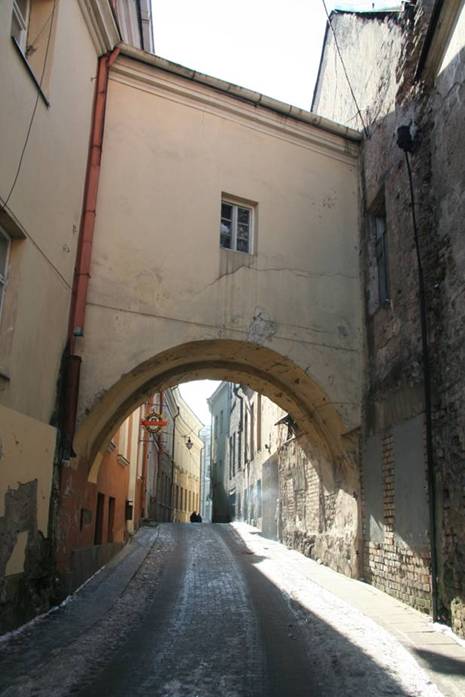
Vilnius Old Town
You can and should visit Lithuania for a lot of reasons this year – as you can see from our below survey. Common for all the 30 ideas mentioned, is that here you get top quality and tons of experience – for half the price – if to compare with most West-European countries.
We do, however, recommend you to plan your trip thoroughly, well in advance.
If you wish, we can help you to put together the most perfect programme for your trip, and give you some hints about how to get here, where to stay, with whom to deal and much more...
If this would be of interest for you, please do not hesitate to write us at editor@VilNews.com
Let us know some details about the main wishes you have for your visit to Lithuania, what to see, what to do, when you plan to come, and so on...
|
A – NATURALLY Nature has been generous to Lithuania. Although there are no mountains or big forests, the country's beauty lies in the diversity of its landscape. This is a place of rolling hills and gentle plains; of quietly flowing rivers and of lakes which reflect the blueness of the sky. |
|||||||
|
|
|
|
|||||
|
B – MUST SEES Vilnius Old Town has a stunning array of Baroque and Gothic architecture, a truly amazing place to visit and experience. It's also in Vilnius centre that you find the KGB Museum, a reminder of the gruesome Soviet oppression this country was forced to live with for 50 sad years. But only 30 km from the city, there is a strong medieval symbol of the 500 years of glory, when Lithuania was a leading superpower of world format. |
|||||||
|
|
|
|
|||||
|
|
|
|
|||||
|
C – CULTURE Far too few people outside Lithuania know what a tremendous treasure of culture this country represents! Today Lithuanian art is not only flourishing at home but is also gaining recognition internationally. Though not every poster tells that a nightingale soprano, a graceful ballerina, or a divine cello player comes from Lithuania, the probability that you have just enjoyed a concert of a Lithuanian artist is great, whether it be New York, London, Berlin, or Vilnius. |
|||||||
|
|
|
|
|||||
|
D – HEALTH & WELLBEING Many people come to Lithuania for quality health care of various kinds. Medical quality here is very high and prices for services very low... In addition the country has a number of extremely good spa and tourism resorts where visitors can undergo all kinds of treatments or simply relax and charge their batteries... |
|||||||
|
|
|
|
|||||
|
E – SPORT, OUTDOOR LIFE & PHYSICAL ACTIVITIES This year's EuroBasket tournament takes place in Lithuania (Aug-Sep). But Lithuania has also numerous other sport activities and events to offer, all year around. The Lithuanian lakes and rivers are full of fish, and the forests full of wild animals including deer, wild bears, beavers, elks and many others. One is allowed to hunt elks, wild bears, wolves, foxes, hares and birds, such as geese, ducks and woodcocks. |
|||||||
|
|
|
|
|||||
|
|
|
|
|||||
|
F - JUST FOR FUN Wondering what to do in Lithuania? We can help you stay busy, don't worry... We can tell you about the most popular tourist attractions, beaches, outdoor/indoor activities, nightlife and much, much more... |
|||||||
|
|
|
|
|||||
|
G – WINING & DINING The natural and healthy character of its dishes is what makes Lithuanian cuisine unique. There are all kinds of restaurants in absolutely all corners of the country – international and local dining and wining from Nida to Druskininkai, from coast to inland, not to forget the big cities... |
|||||||
|
|
|
|
|||||
|
H – HOTELS, CONFERENCES Lithuanian hotels offer a large variety of accommodation options. Though the country has undergone vast economic development, it also retains ties with its nature loving, glorious pagan, countryside past. Did we mention conferences? Try Lithuania – fantastic quality, half the price! |
|||||||
|
|
|
|
|||||
|
Oops... We forgot to mention golf... As compensation we are ready help you finding the best offers from the country's top golf courses... OK? |
|
- Bookmark :
- Digg
- del.icio.us
- Stumbleupon
- Redit it
Searching for the Holy Grail? Come to Vilnius!
- Posted by - (14) Comment
|
|
- Bookmark :
- Digg
- del.icio.us
- Stumbleupon
- Redit it
|
1918 |
1990 |
|
|
1991 |
2011? |
There has, as I see it, been three distinct unification processes that took place in Lithuania over the latest 100 years – in February 1918, March 1990 and in January 1991. These unification processes have had an enormous impact on Lithuania as a nation, and this country could easily have been looking very differently today had it not been for the fact that the nation's people and leaders, at these three important moments, so clearly manifested that Lithuania demanded to be a free, independent country with norms, values and dreams based on the country’s long and proud historical background and the many characteristics that had made this country and its people precisely the nation called Lithuania. Those qualities are what made Lithuania a great force of progress and prosperity in human history.
What is required now is for this country to again pull together, confront boldly the challenges we face, and take responsibility for own future once more.
The challenge this time is totally different from the three previous times. We are this time not challenged by threats from aggressive neighbours, but rather by internal resolution and lack of involvement within the nation's own population. What we see today is almost a kind of lethargy.
The challenge is not diminished by the fact that the country's population now is scattered all over the world.
The descendants of those who left Lithuania during World War II and earlier seem to be less and less connected to their ancestors’ home country and the enormous number of people who have left Lithuania over the past decade has made the challenge even more complicated.
The way I see it, we are in other words now faced with two parallel challenges:
1) To encourage the country’s own population to take common responsibility for a Lithuania changed to the better.
2) To connect all of Lithuanian origin, wherever in the world they live, to joint efforts and cooperation.
I think she has some very good points, the young woman who wrote in our debate forum a few days ago:
- Many people are angry but refuse to take their part in making Lithuania better.
- People refuse to change themselves in the first hand.
- People have the right to elect governments, but many do not even show up at the polling stations.
- We hate corruption, but many take the easy way and bribe policemen.
- People who could lead by example also chose the easy way instead.
- Change does not happen if we don’t make it happen.
We, here in VilNews, would like to have responses from you, dear readers, to the following questions;
1) What do you think should be done for this country to again unite in common efforts for improvement and new strength as a nation?
2) What do you think should be done with regard to new bridge-building between all with some form of connection to Lithuania?
I see the resolution trends we see for this nation as very sad and serious. But, as the young woman put it, change must start with ourselves.
- Bookmark :
- Digg
- del.icio.us
- Stumbleupon
- Redit it
It is spring in Lithuania! The real estate market is starting to pick up after three dreary years. I will therefore now offer those interested in a new home or a new investment, to learn more about two objects in what is normally referred to as the luxury class.
The first object is an existing penthouse apartment in Vilnius Old Town. The second object is a planned townhouse development situated at the river Neris in Zverynas.
Please contact me as soon as possible if any of these objects are of interest for you.
Write me at aage.myhre@VilNews.com
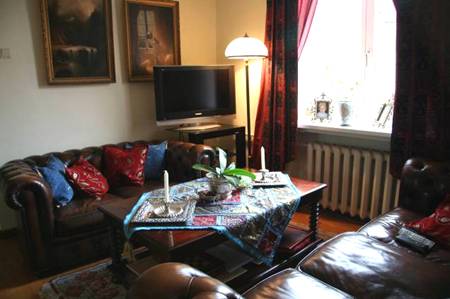
Three-floor Old Town penthouse. One of the best in Vilnius. Prime location.
The apartment is located at the very heart of Vilnius Old Town – yet on top of it, far away from the street’s hustle and bustle! It is a genuine penthouse on three levels – with a main floor, a mezzanine and a top floor with the most fantastic views over Vilnius Old Town (7,5 meters from main floor to the ceiling top!).
It was architect-designed and built in 1999, called one of the most desirable and exclusive apartments in Vilnius by the press. All equipment is state-of-the-art, including all plumbing, wiring and other hidden installations. All windows and doors are new, the roof and walls are thoroughly insulated with mineral wool, and the apartment is decorated to the highest standard throughout. Mainly parquet flooring, with ceramic tiles in bathrooms. The top floor view over Vilnius Old Town has to be seen to be believed.

Three exclusive townhouses, each with around 200 m2 floor space, are planned built at one of Lithuania’s very best land plots, in the Vilnius district of Zverynas. The plot is exceptionally green, south west oriented, bordering the river Neris ant the huge, forested Vingis Park at the other river side.
Each townhouse will cover a total floor space of between 150 and 200 sq.m., plus double garages for each unit. Each unit will also have private gardens and plenty of outdoor space for kids and grown ups.
Advantages of the development are as follows:
· Zverynas is known as the diplomat district of Vilnius; prestigious, safe and green
· The development is located within walking distance from the city centre
· The townhouses will be planned with attention to security for kids and grownups
· Each unit can be more or less tailor made for each family
· The green outdoor areas/gardens are ideal for barbeque, private life etc
· The development offers unique privacy qualities in an utmost green environment
· The view from each of the units will be to the west, to Vingis Park and the River Neris
- Bookmark :
- Digg
- del.icio.us
- Stumbleupon
- Redit it
63% of Lithuanian women are victims of violence
- Posted by - (2) Comment
63.3 % of Lithuanian women have been victims of male physical or sexual violence or threats after their 16th birthday. This represents today such a severe problem for this country that, in my opinion, President Grybauskaite should personally get involved and take the necessary measures to turn around this devastating trend. Klaipeda municipality wants to be a pioneer-municipality in terms of focus on domestic violence and abuse of women, and I believe it could be a good idea for the President to support these good efforts and make Klaipeda a positive showcase for constructive focus on domestic violence and the terrifying violence against women that too a far too high degree characterises today’s Lithuania. Facts about women’s situation in Lithuania - The Law on Equal Opportunities was adopted in 1999, but the system of implementation of the legislation and the mechanism of protecting women’s human rights are not sufficient enough to achieve optimal results. - A very important step forward for the implementation of gender equality in Lithuania was done by the Government in 2003 by adopting the “National programme for Equal Opportunities for Women and Men 2003-2004” and 2005-2009. - An inter-Ministerial Commission on Equal Opportunities for Women and Men was established in year 2000 to coordinate the implementation of the gender mainstreaming policy. - In May 2009 Dalia Grybauskaite was elected Lithuania's first female president. Lithuania has made it to the top-twenty list of countries worldwide in terms of security of equal opportunities for men and women, outmatching its neighbours and some of the EU’s old-timers. According to the World Economic Forum that estimates economic, legal and social gaps between the genders, in 2007 Lithuania placed 14th, advancing by 7 places from 21 in 2006 as the BNS reported. Lithuania has been given a 72.3 percent score, while 100 percent means absolute equality and 0 percent — total discrimination. Latvia (73.3 percent) has moved up by 6 positions over a year to the 13th place, Estonia (70.1 percent) placed 30, one step above its position as of last year.
Population and families
Education
Employment and labour market
Participation in administration and decision-taking
women traffickingLithuania has become in recent years a country of women export and transit between Eastern, Central and Western European countries. Poverty and unemployment force many women into prostitution. Different sources suggest that women from different social-demographical levels are involved in the sex-industry, mainly by young girls and women (average age – 24.5 years old) from so called risk groups. Experts claim that the geography in trafficking women from Lithuania is changing: if earlier it was Israel, Greece, United Arab Emirates, and Turkey, now main flows extend to Germany, Holland, Great Britain, France, Sweden, and Spain. One of the problems in dealing with trafficking issues in Lithuania is lack of statistics and reintegration of victims into the society. As a public opinion survey done in 2002 by request of International Organization for Migration (IOM) suggests, up to 53.4% of Lithuanian people think “many” or “very many” girls are trafficked abroad to work as prostitutes by deceit, and 6.7% of people face this phenomenon in their close social environment, i.e. there were attempts made to traffic their close friend, relative, colleague, acquaintance. (“Trafficking in women: problems and decisions“ IOM, Institute for Social Research, 2004).
violence against womenViolence constitutes one of the most actual problems in Lithuania. Most people of Lithuania have suffered from violence at least once in their life. Males usually experience violence in public places, boys in parents’ families. Women are usually victims of sexual violence or violence in their own family… Domestic violenceViolence, especially domestic violence, is one of the main problems women are facing in nowadays Lithuania. Violence based on gender conflict, such as battering or any other domestic violence, sexual depravation and abuse, trafficking of women and children, forced prostitution and sexual harassment are incompatible with honour and dignity of a person. There is lack of high-skilled officials, capable to assess situations of domestic conflicts, to find out sources for such behaviour and to assist victims or counsel the population in this field; insufficient training for judges, police officials, social teachers and social workers and doctors capable of dealing with violent men. Police and courts are avoiding the cases of domestic violence unless the victim is severely beaten or killed. All possible police measures against the perpetrator are very restricted and underused to protect the victim of violence. The network of crisis centres providing support to victims of violence is insufficient. Many crisis centres were established and are operating on the initiative of non-governmental organisations. According to the data gathered by the Women’s Issues Information Centre, there now are 15 Crisis Centres and 6 Shelters for battered women, but they do not cover the whole territory of the country and only 2 of them are supported by Municipalities. Crisis centres providing support to the victims of violence and working with perpetrators should be established following the territorial principle with active participation of municipalities. A multiplex approach towards violence, covering support to violence victims, application of sanctions on perpetrators, awareness raising of the public, specialists and violence victims, education and training, law enforcement systems, strengthening the role of legal institutions and, health care, is still rather limited. Therefore, it is obvious that there is lack of appropriate complex programmes addressing the issues and covering the respective areas including coordination of actions of various public and non-governmental institutions. |
- Bookmark :
- Digg
- del.icio.us
- Stumbleupon
- Redit it
VilNews e-magazine is published in Vilnius, Lithuania. Editor-in-Chief: Mr. Aage Myhre. Inquires to the editors: editor@VilNews.com.
Code of Ethics: See Section 2 – about VilNews. VilNews is not responsible for content on external links/web pages.
HOW TO ADVERTISE IN VILNEWS.
All content is copyrighted © 2011. UAB ‘VilNews’.

 Click on the buttons to open and read each of VilNews' 18 sub-sections
Click on the buttons to open and read each of VilNews' 18 sub-sections 













































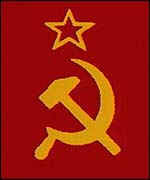
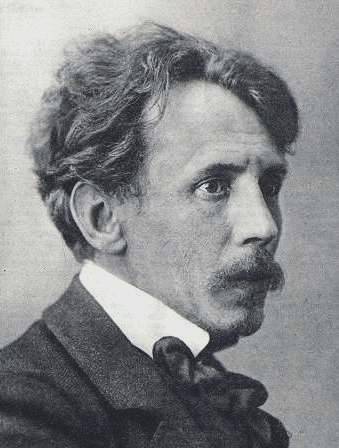
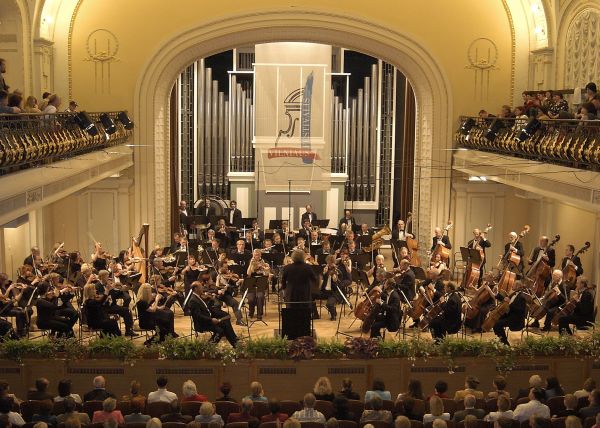


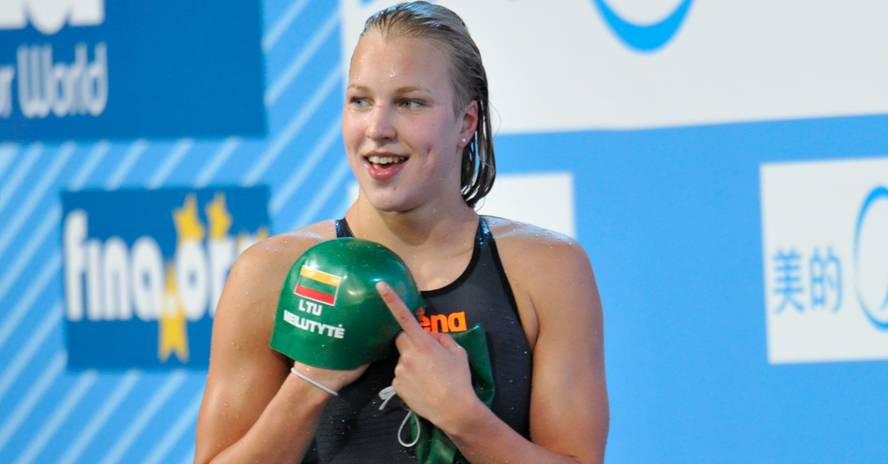















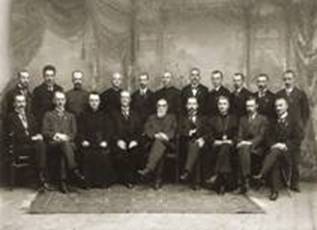
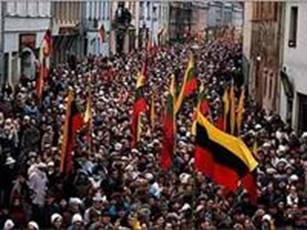
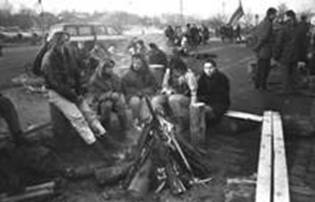
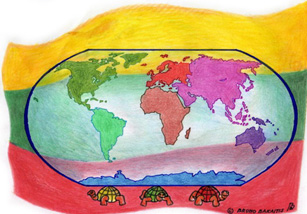





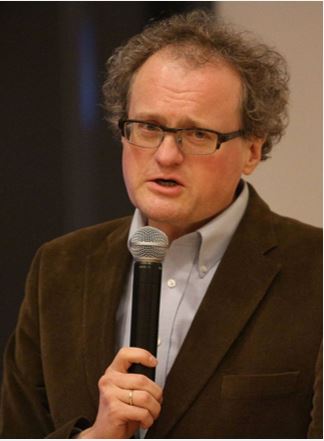
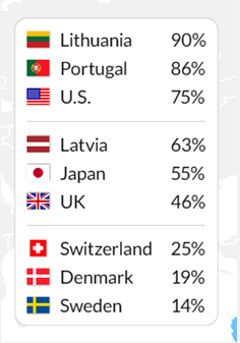
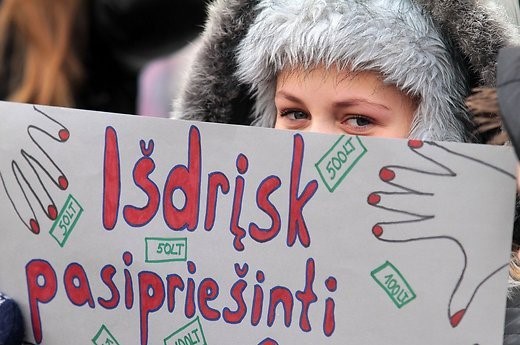


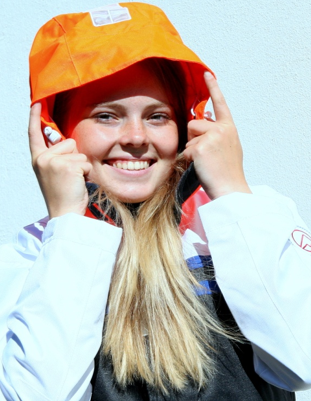
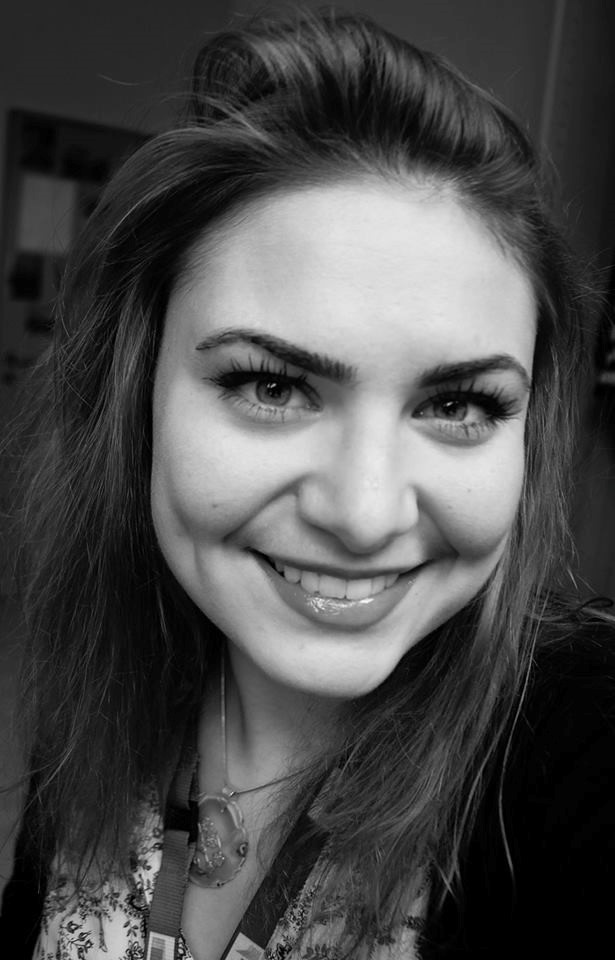
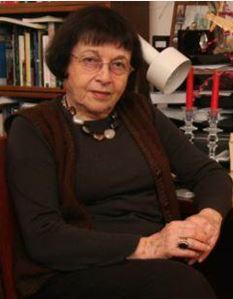
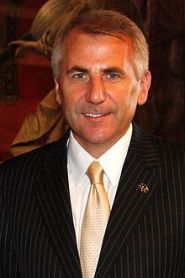
.jpg)
